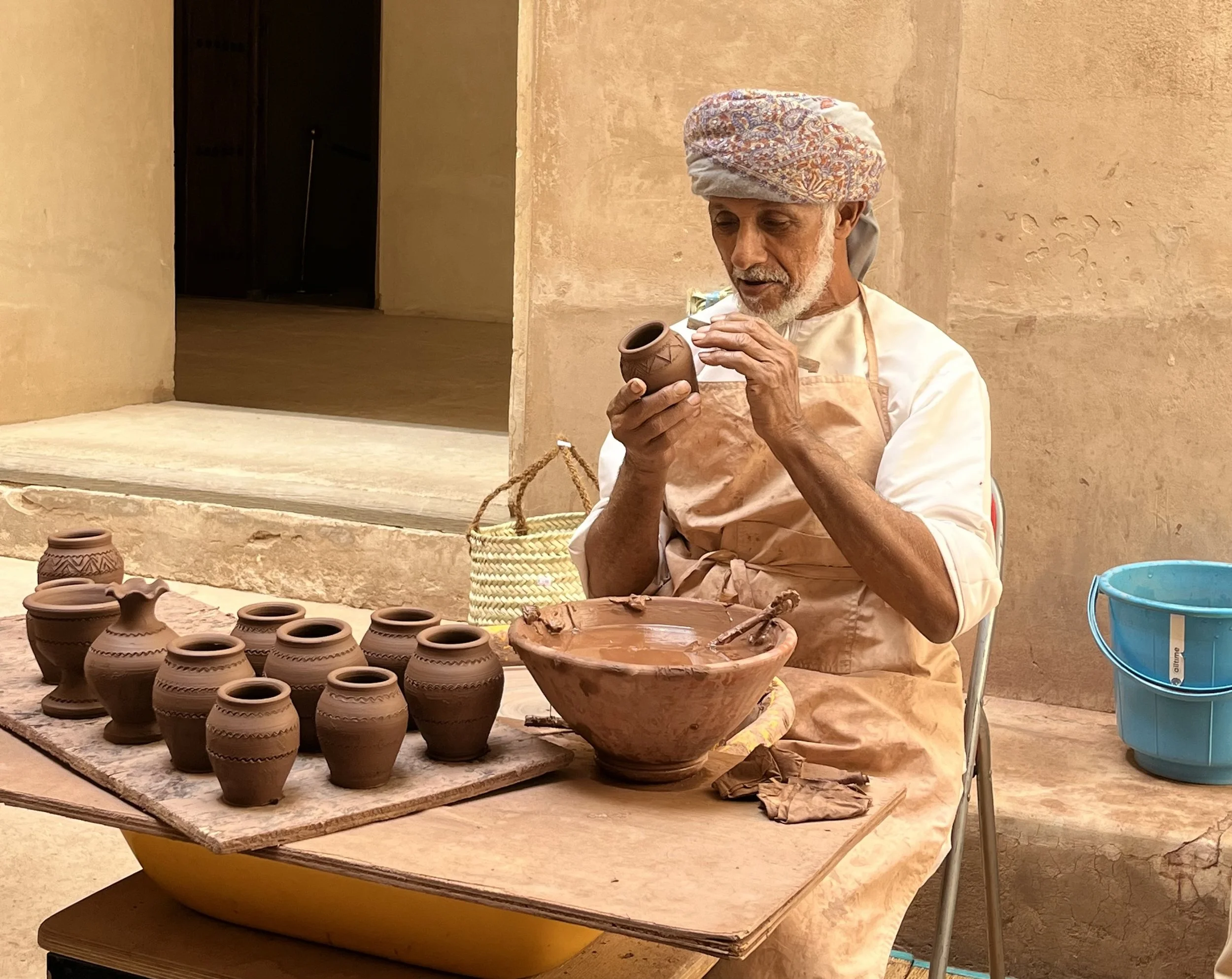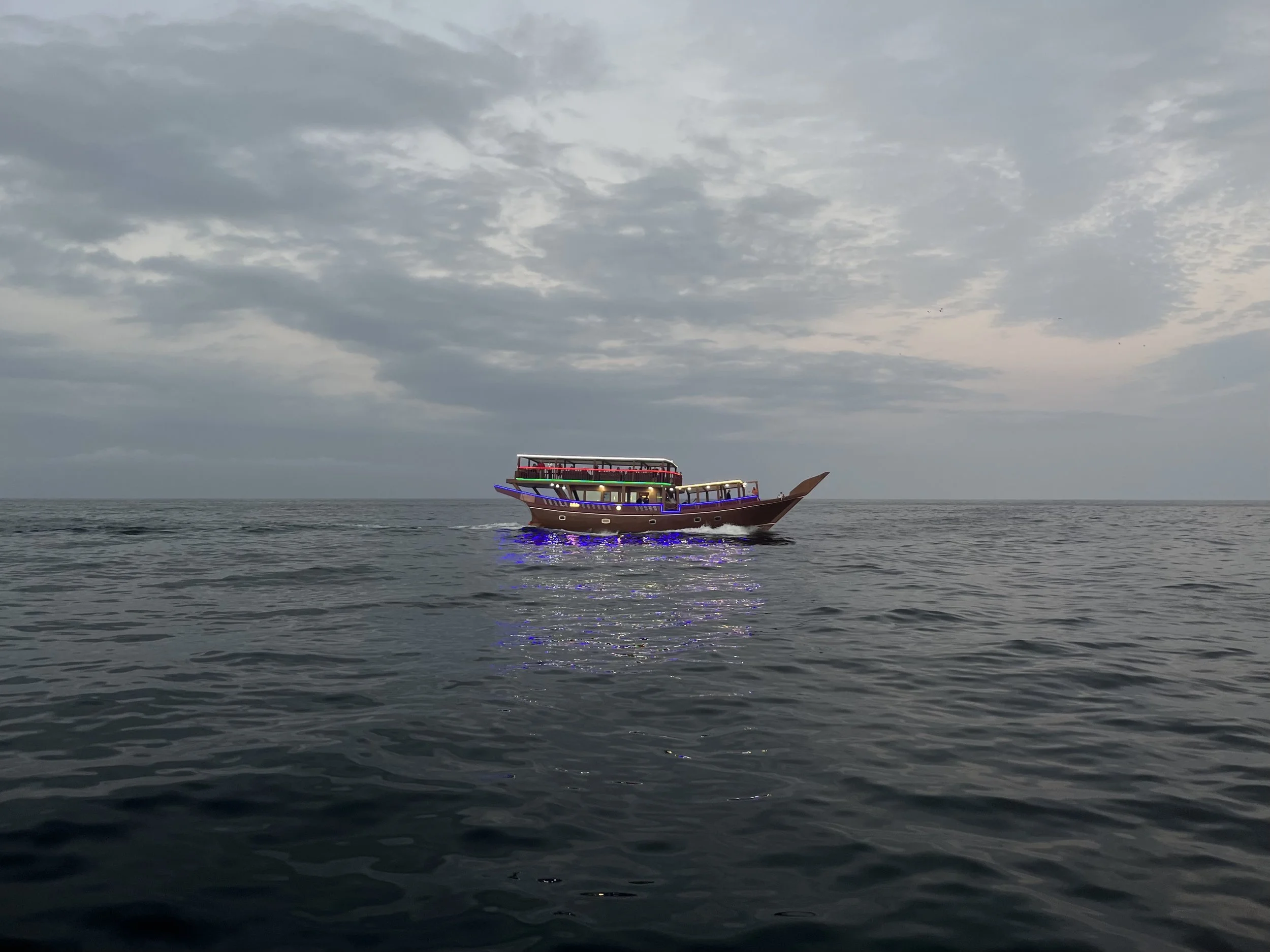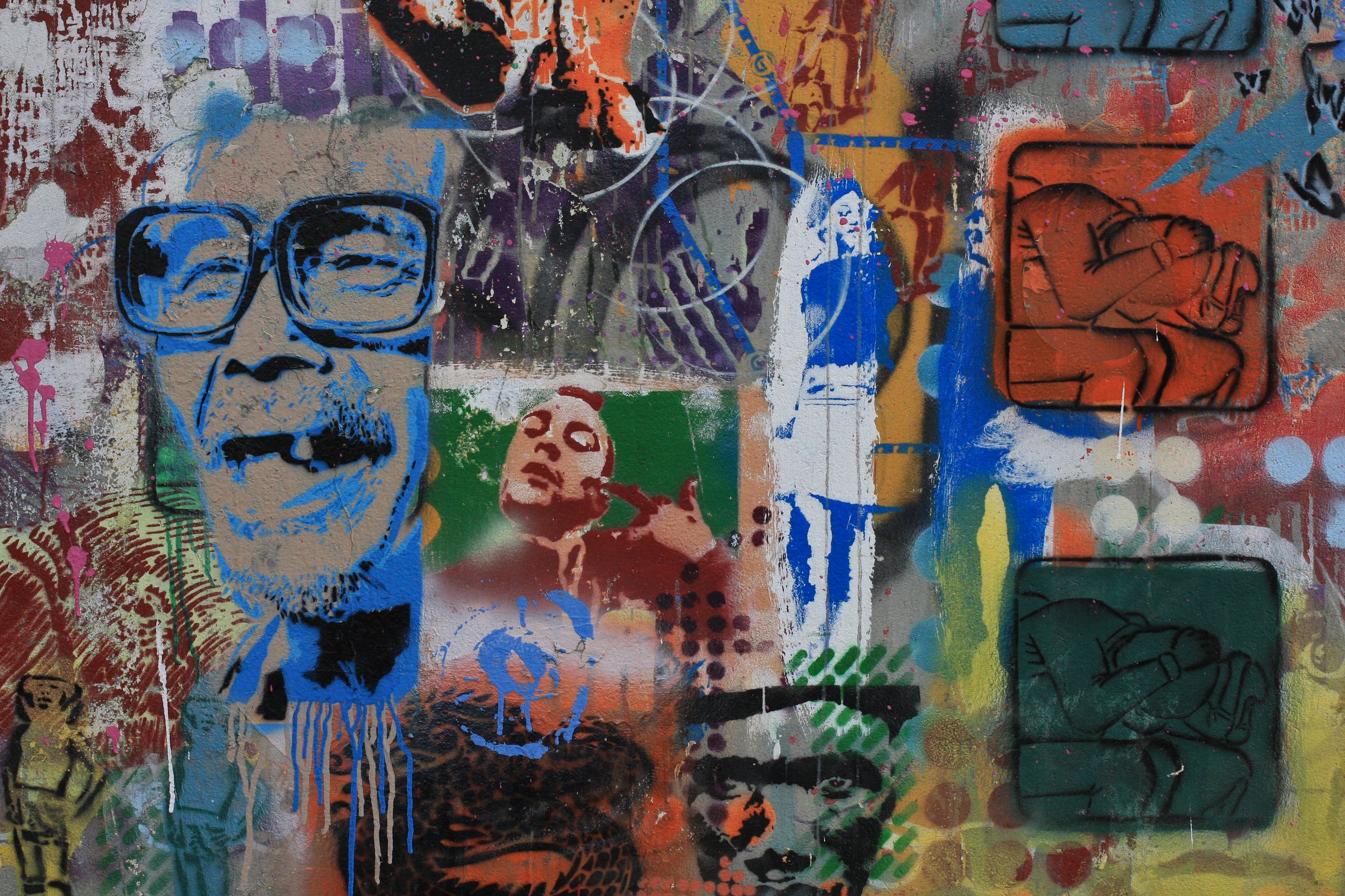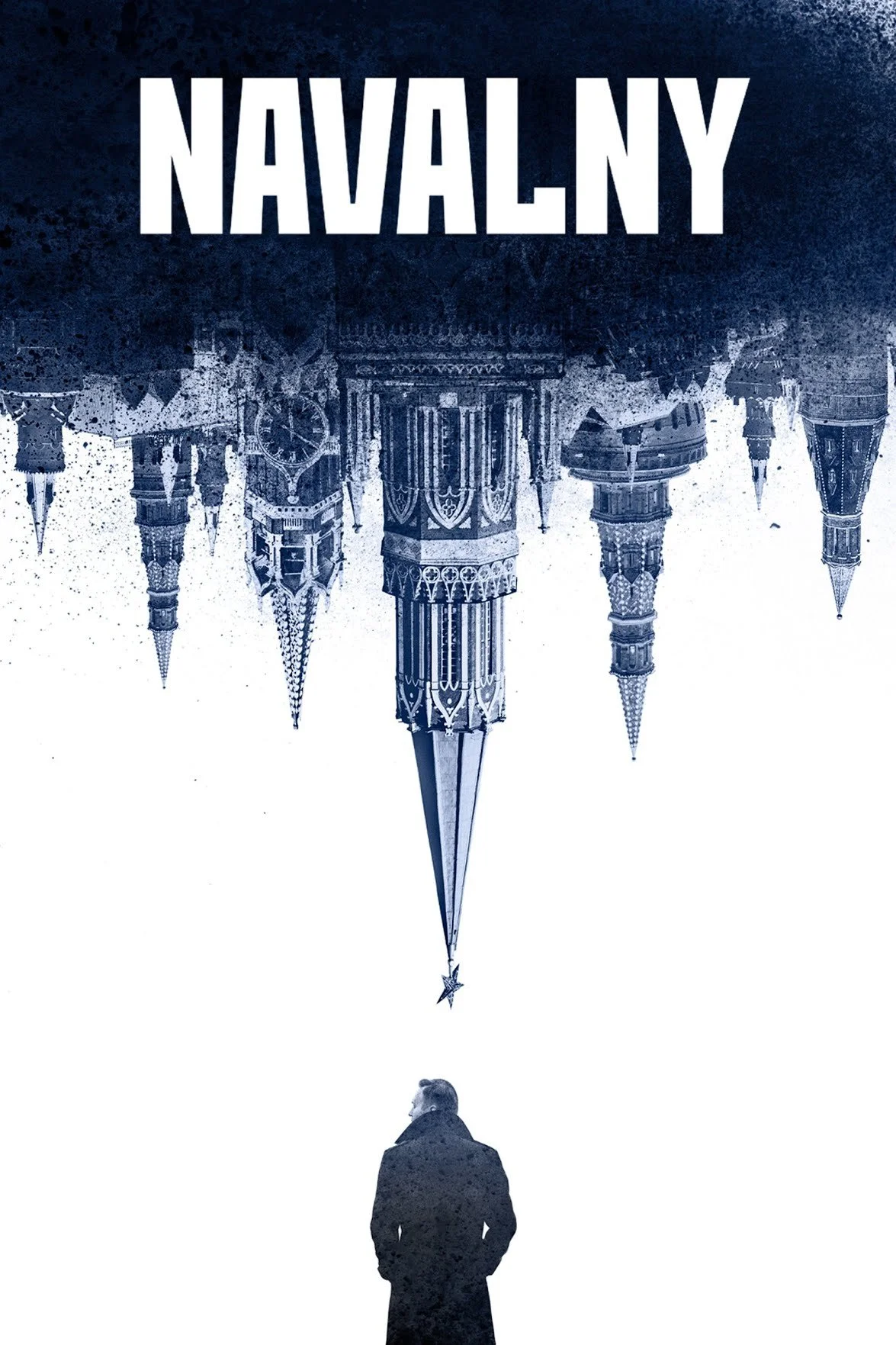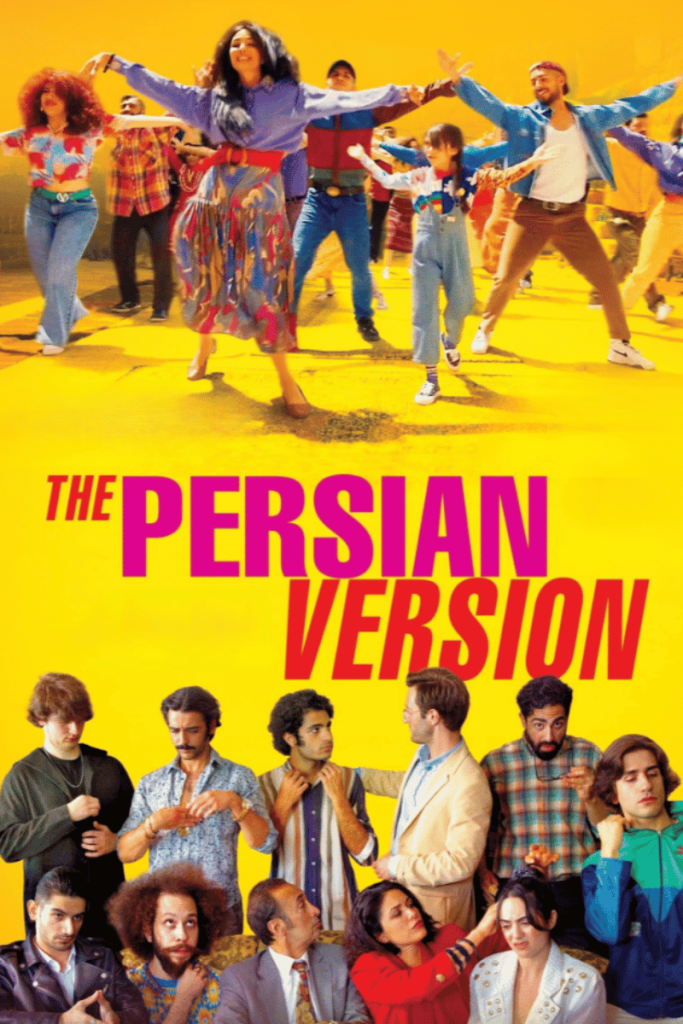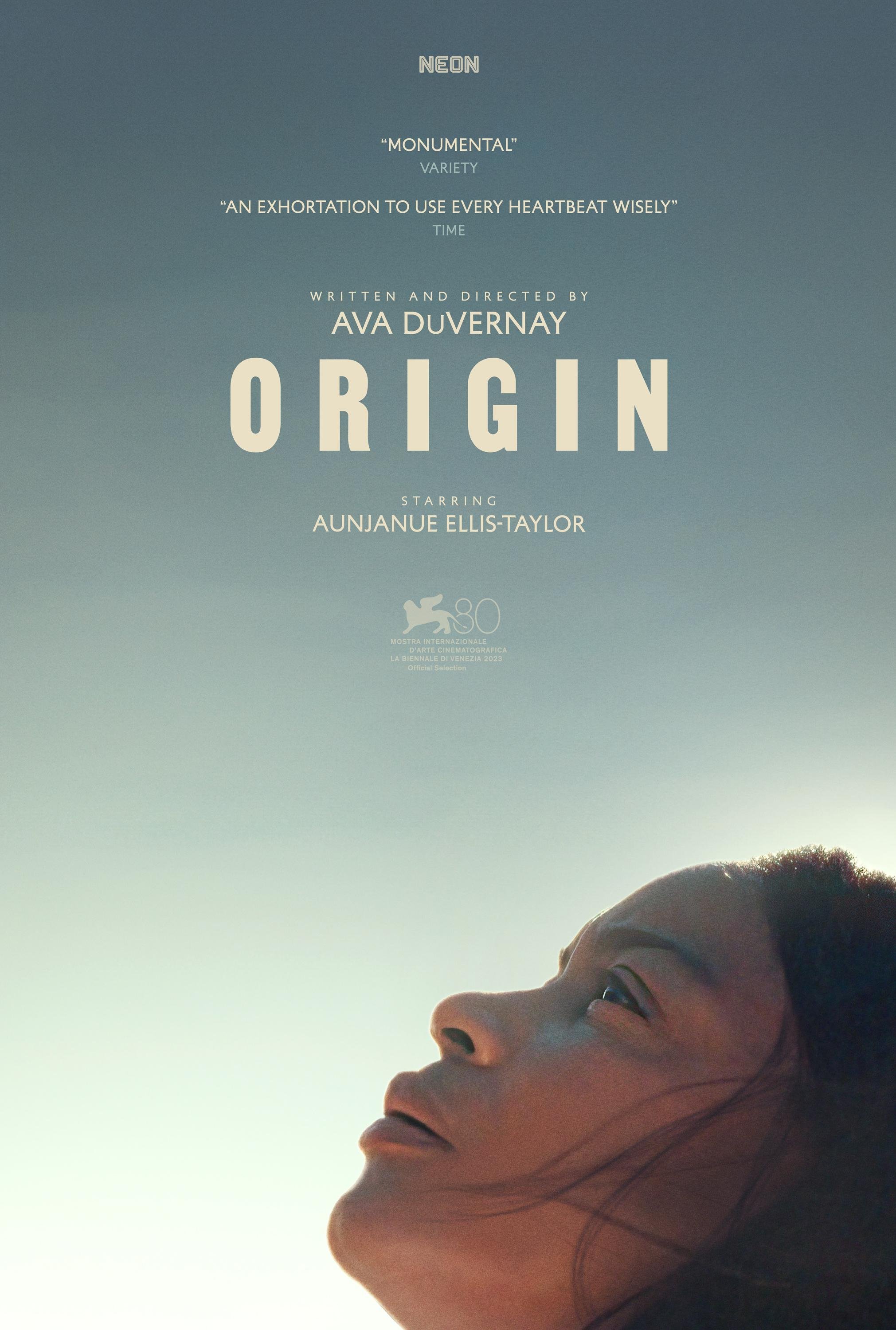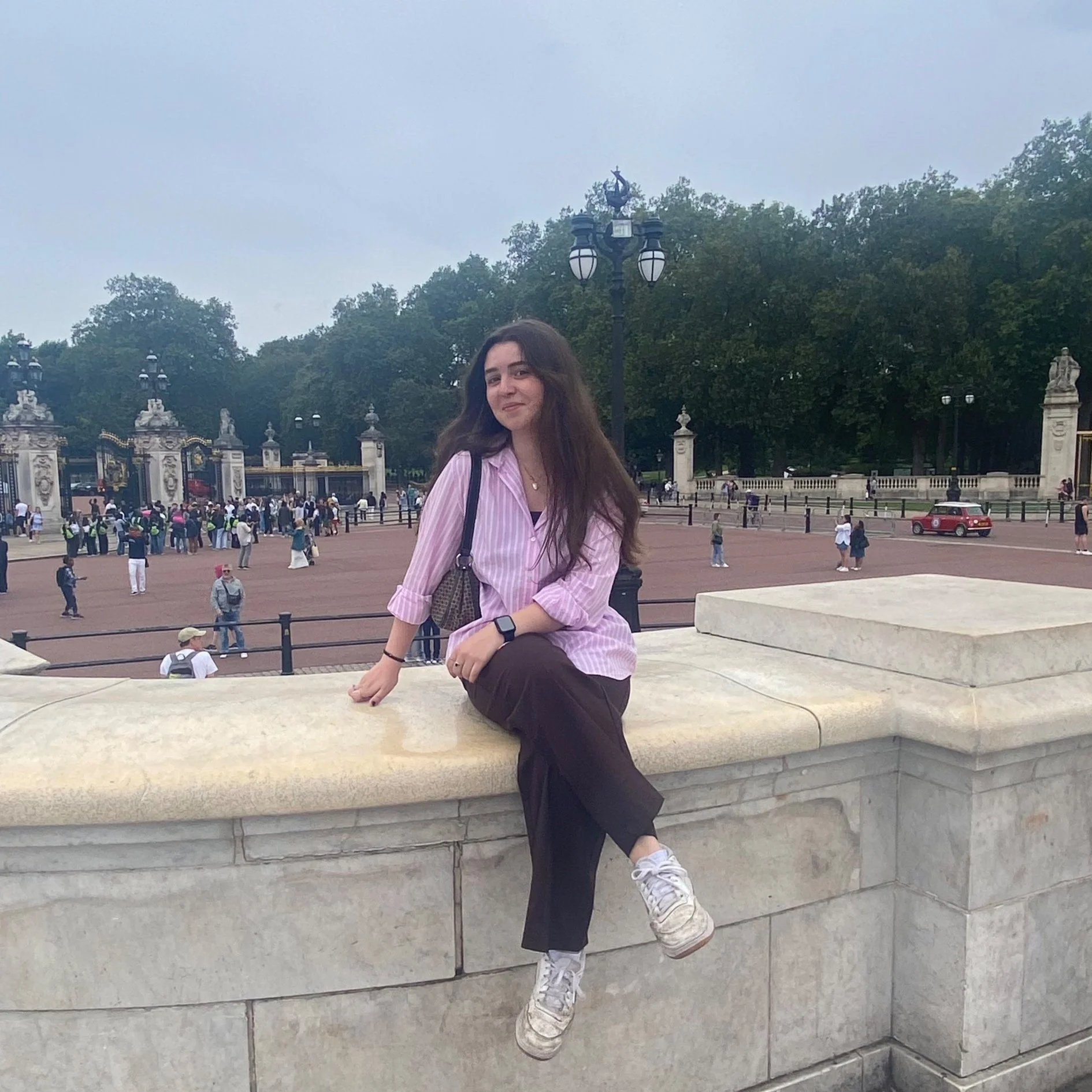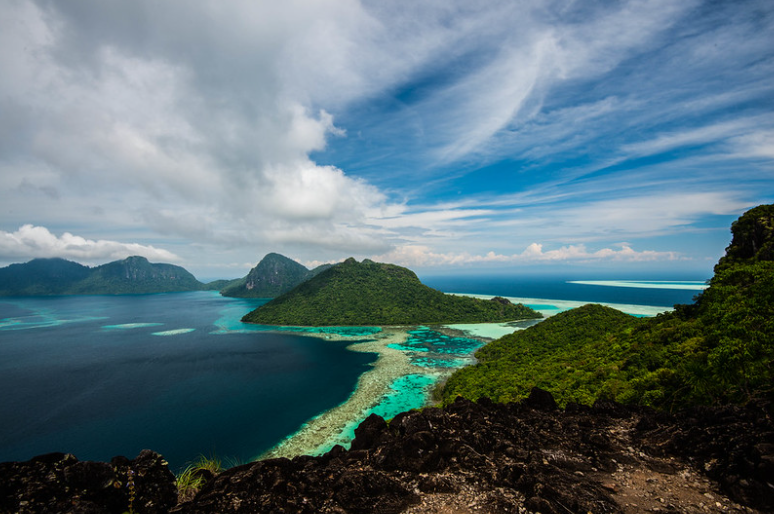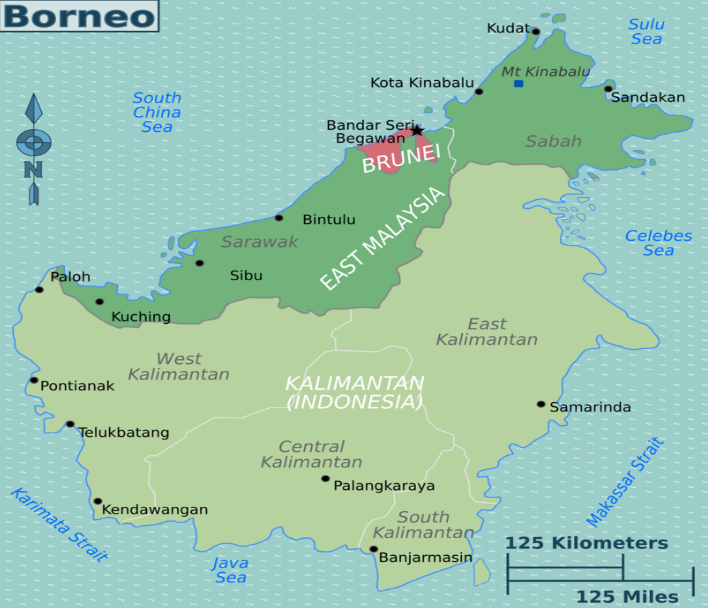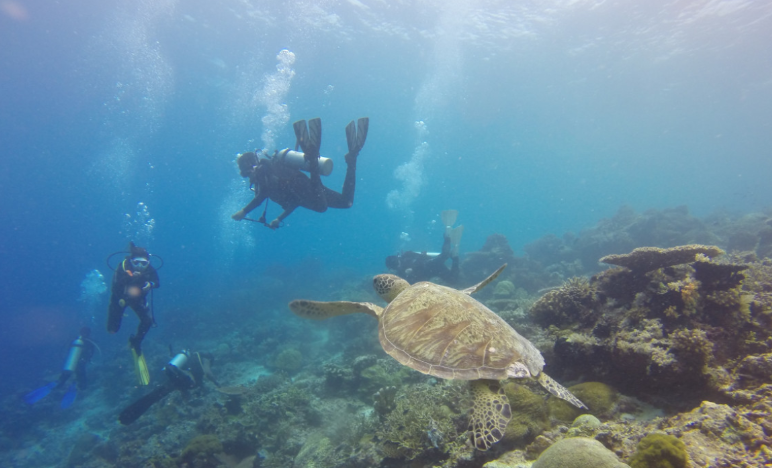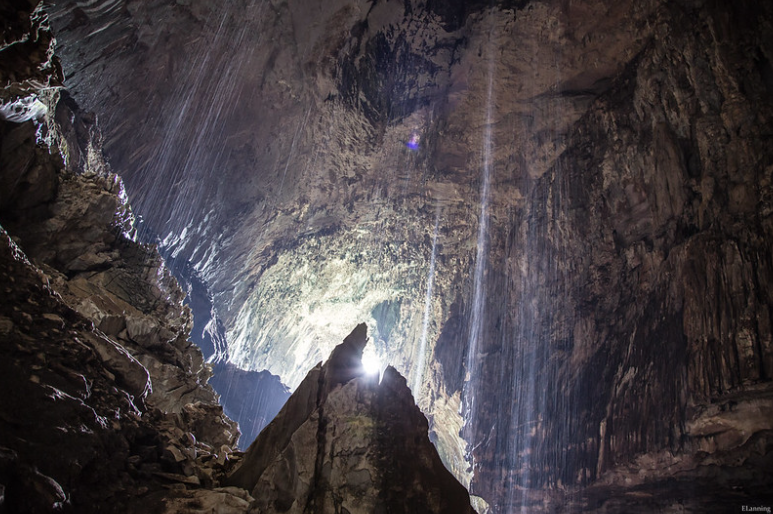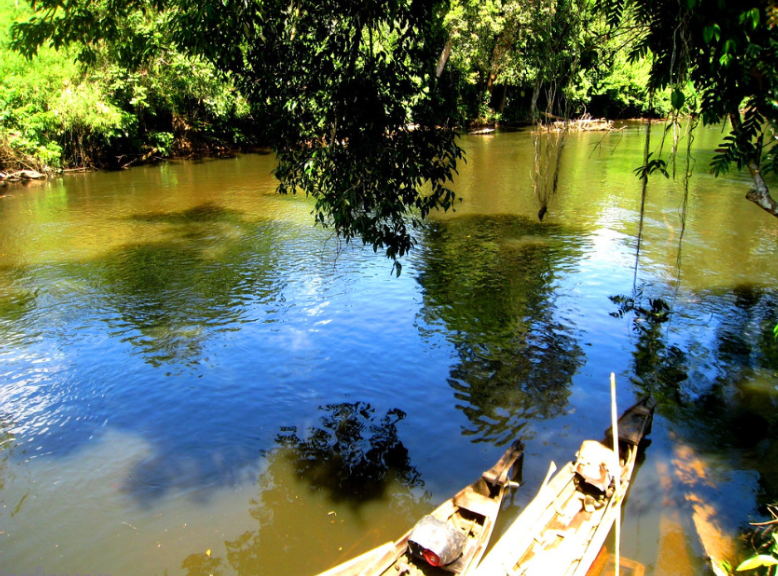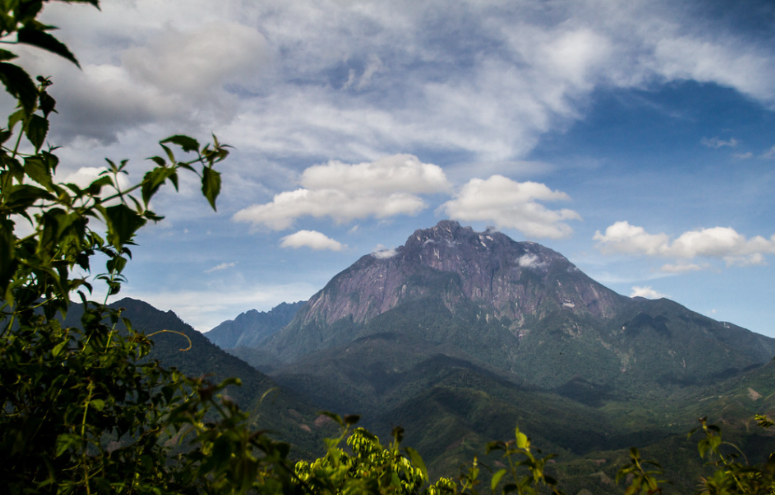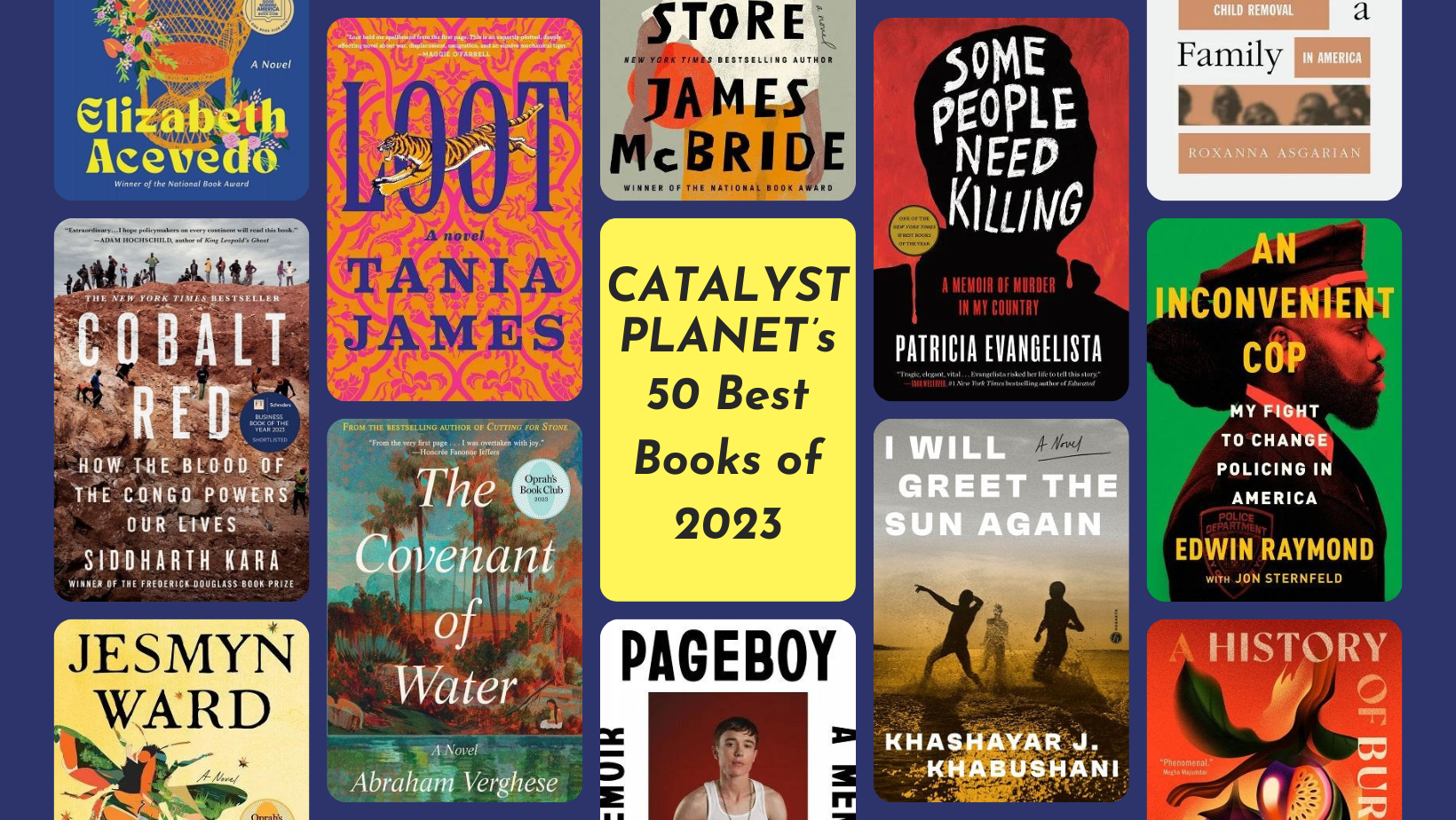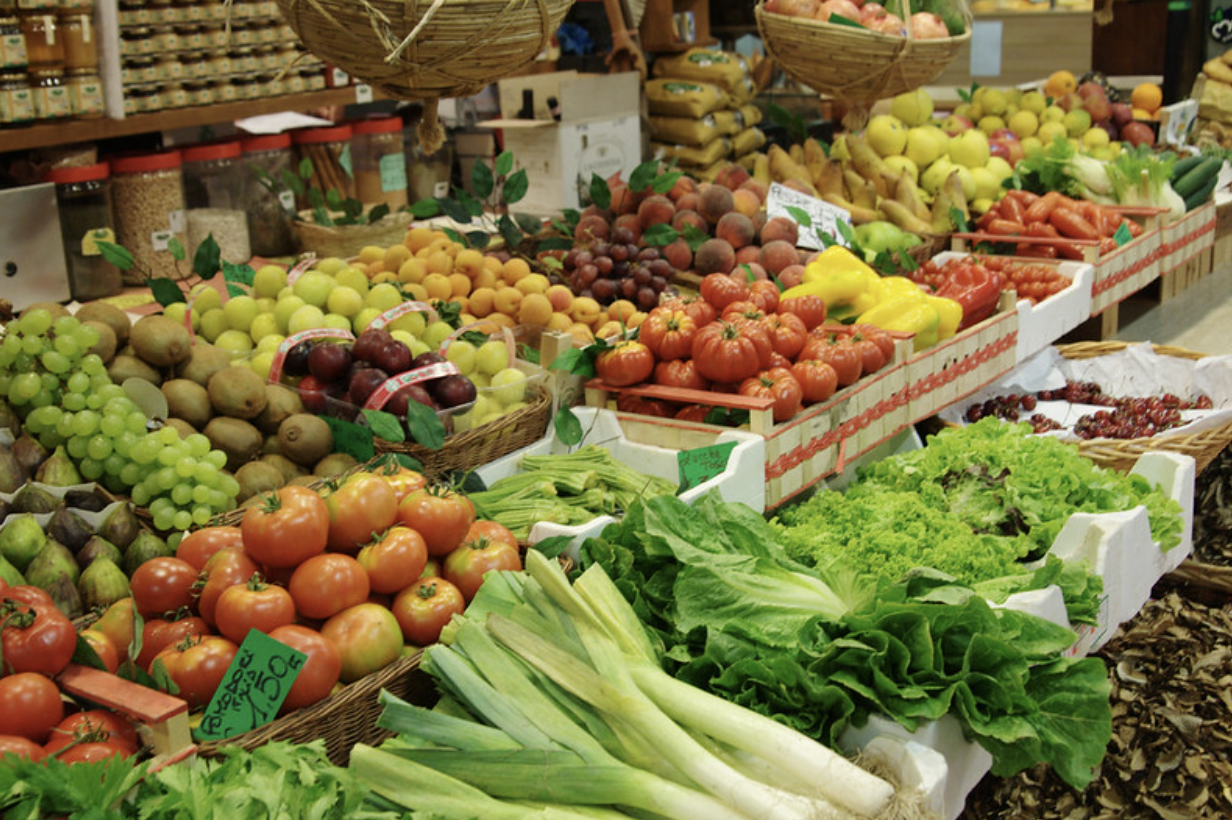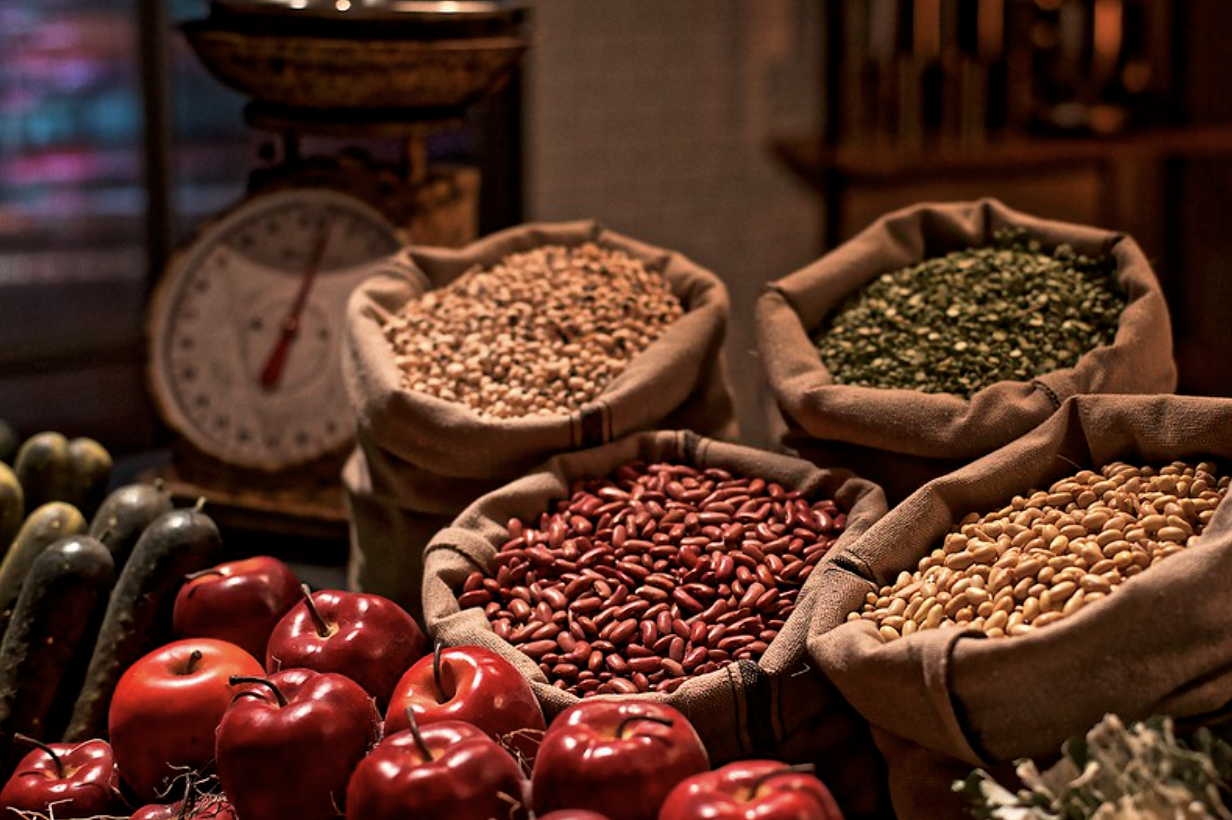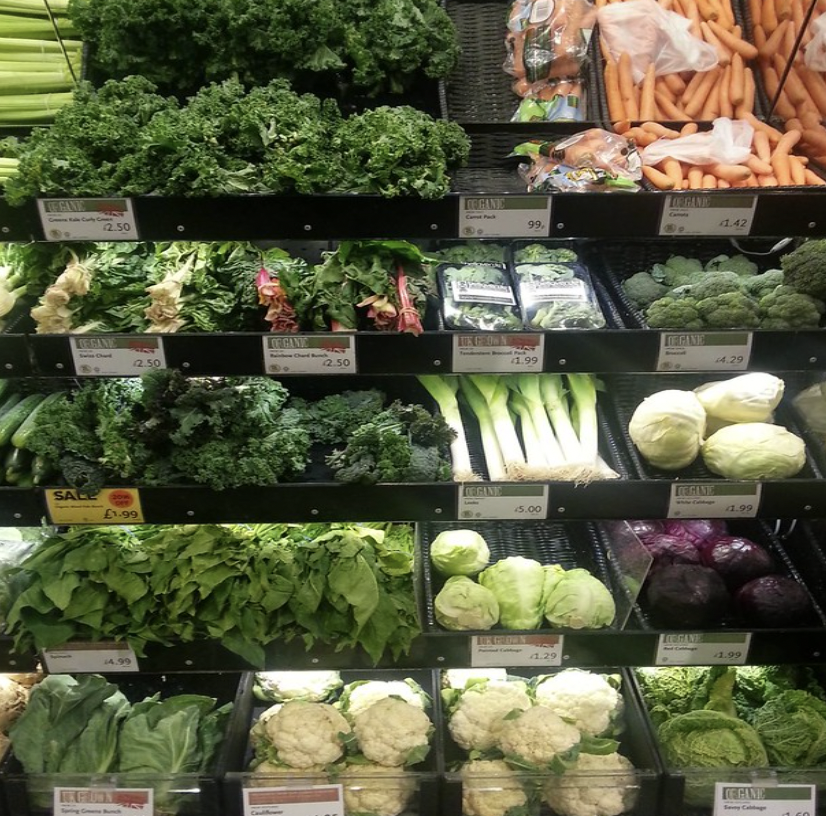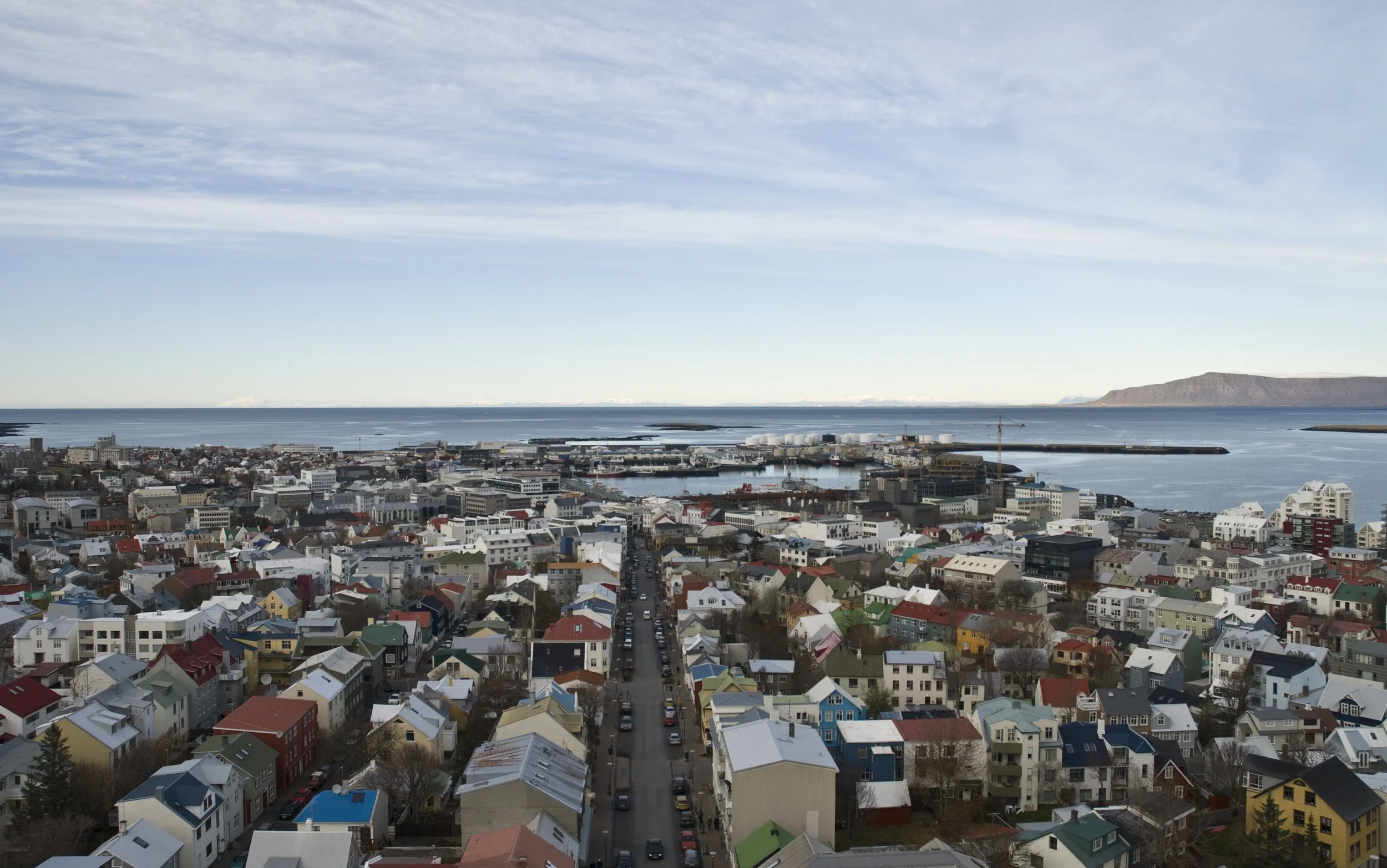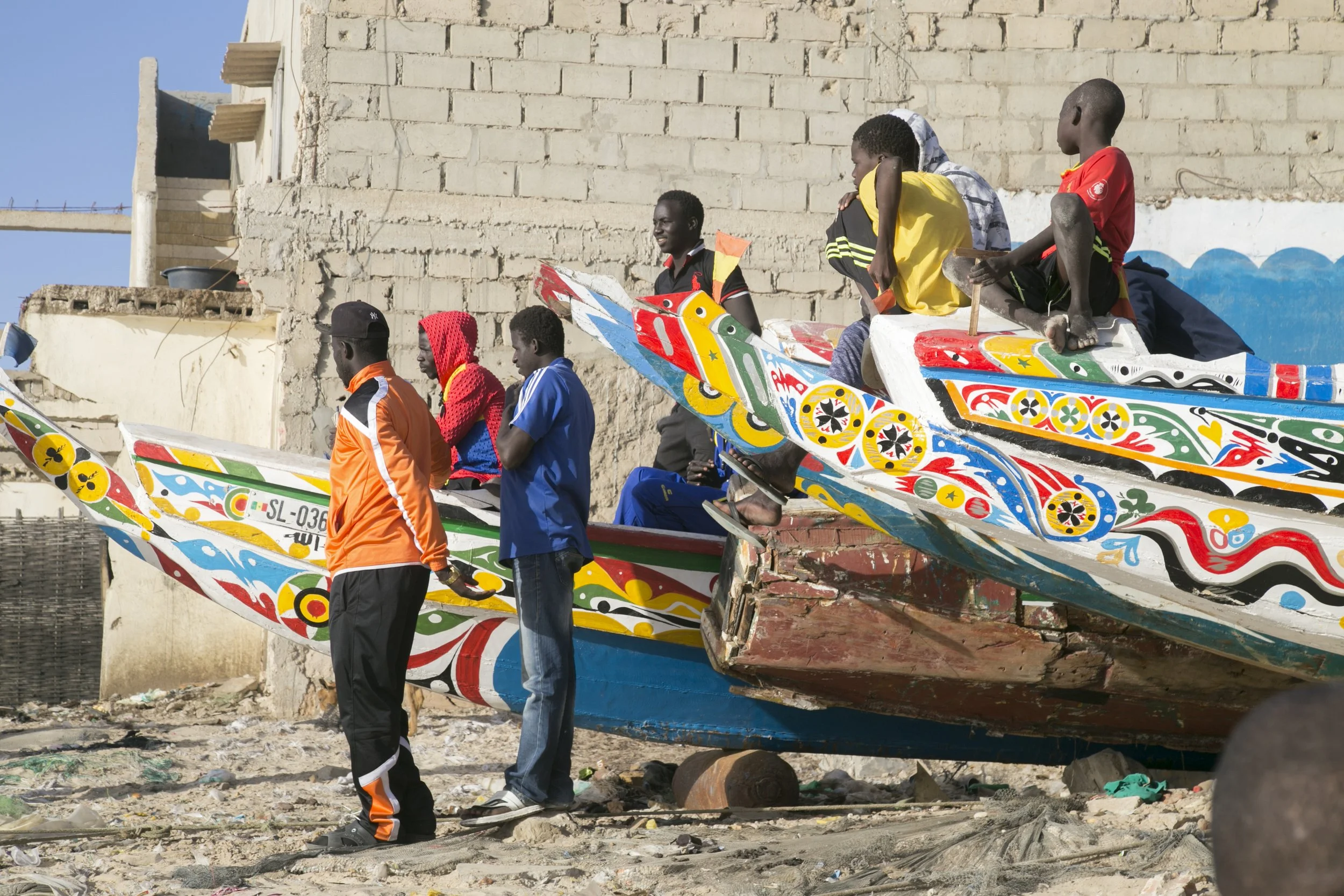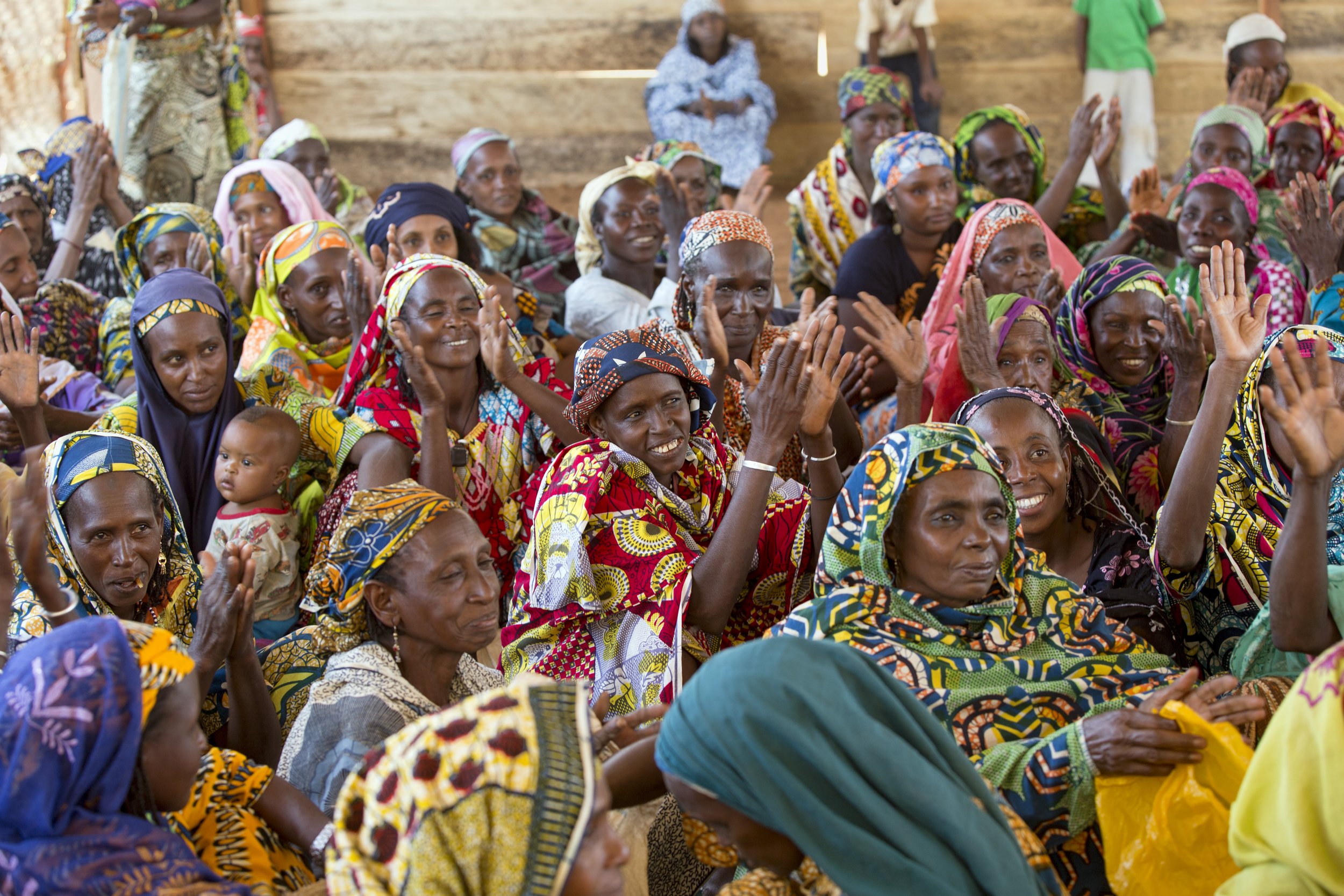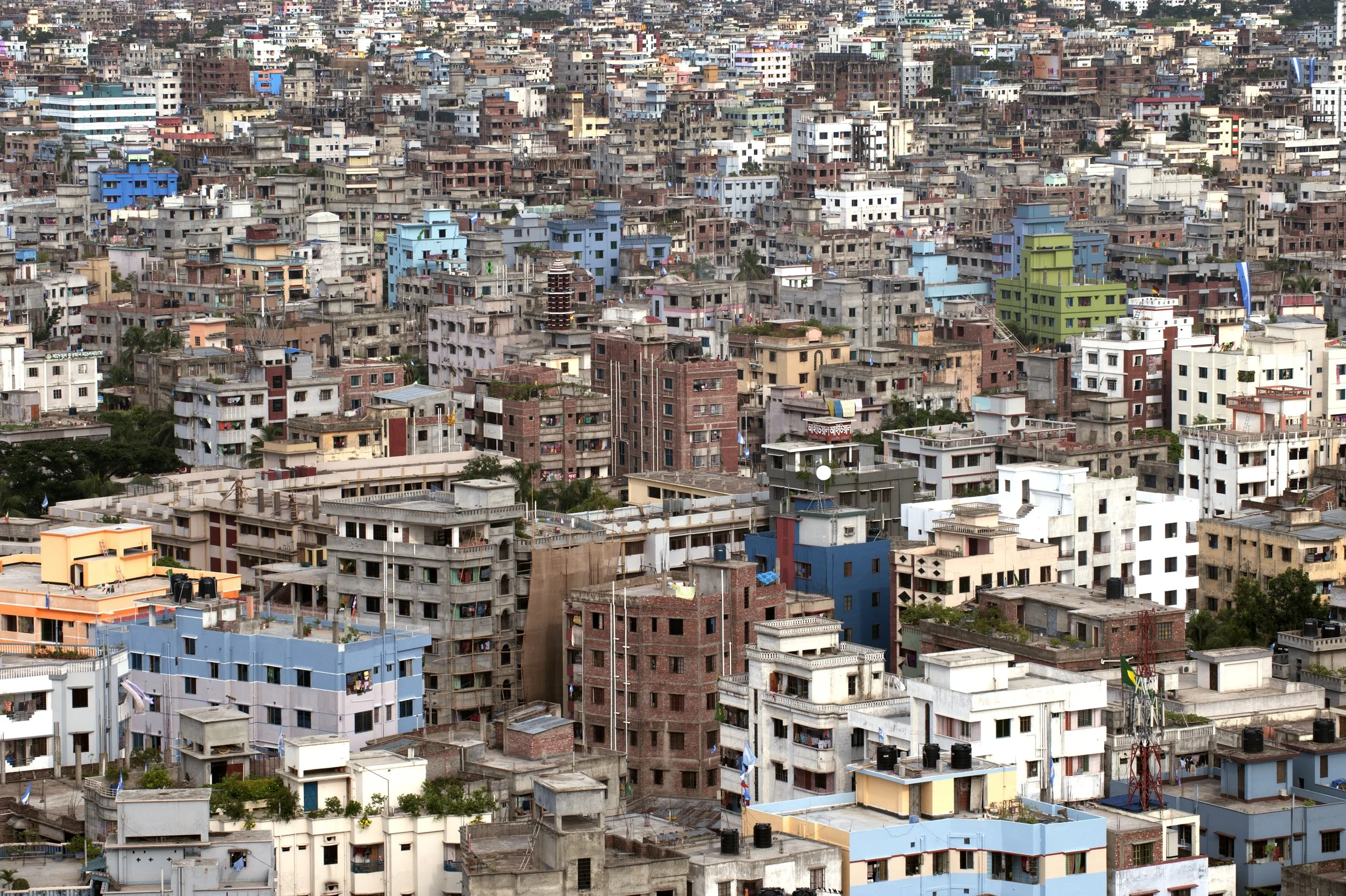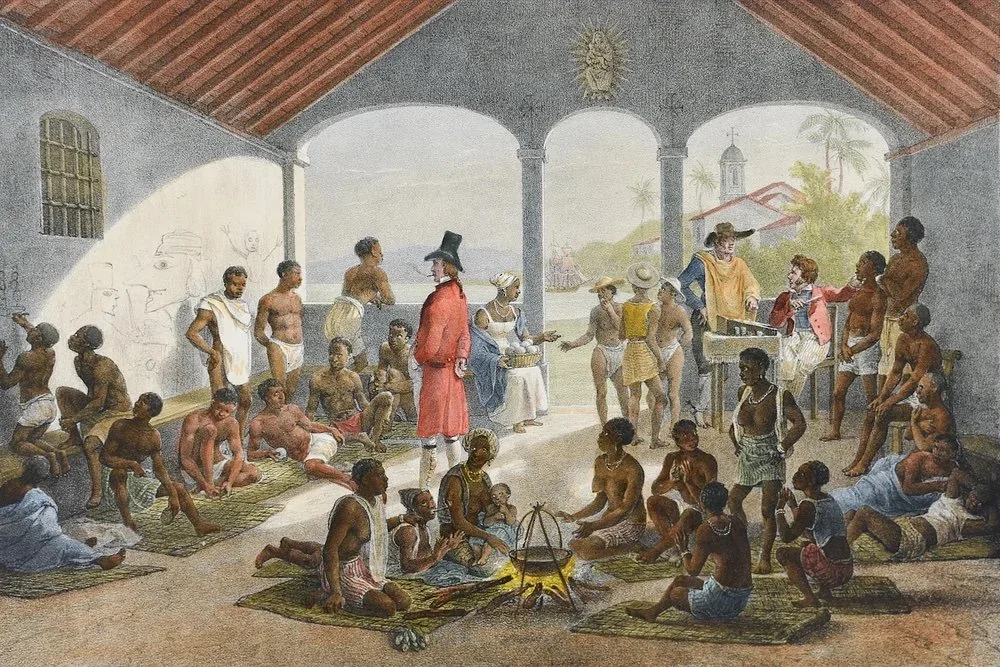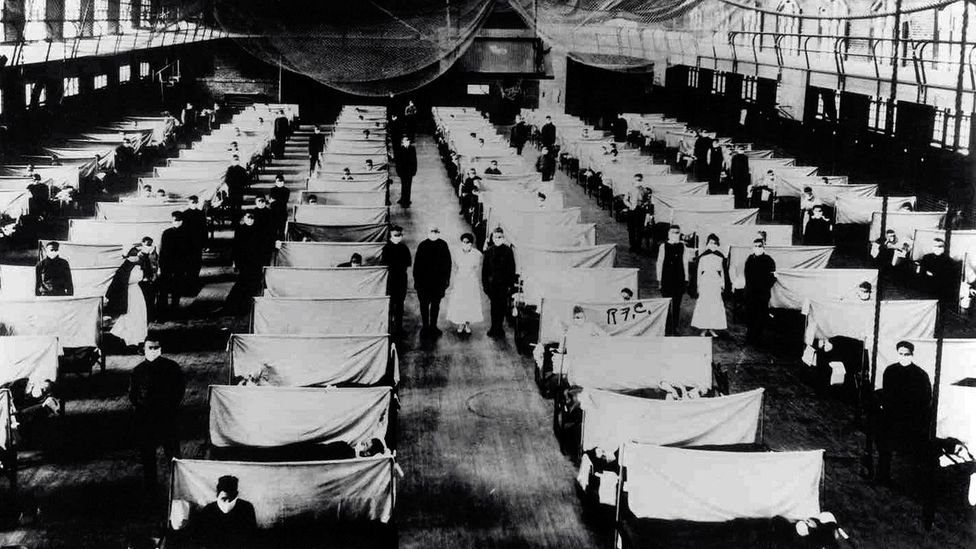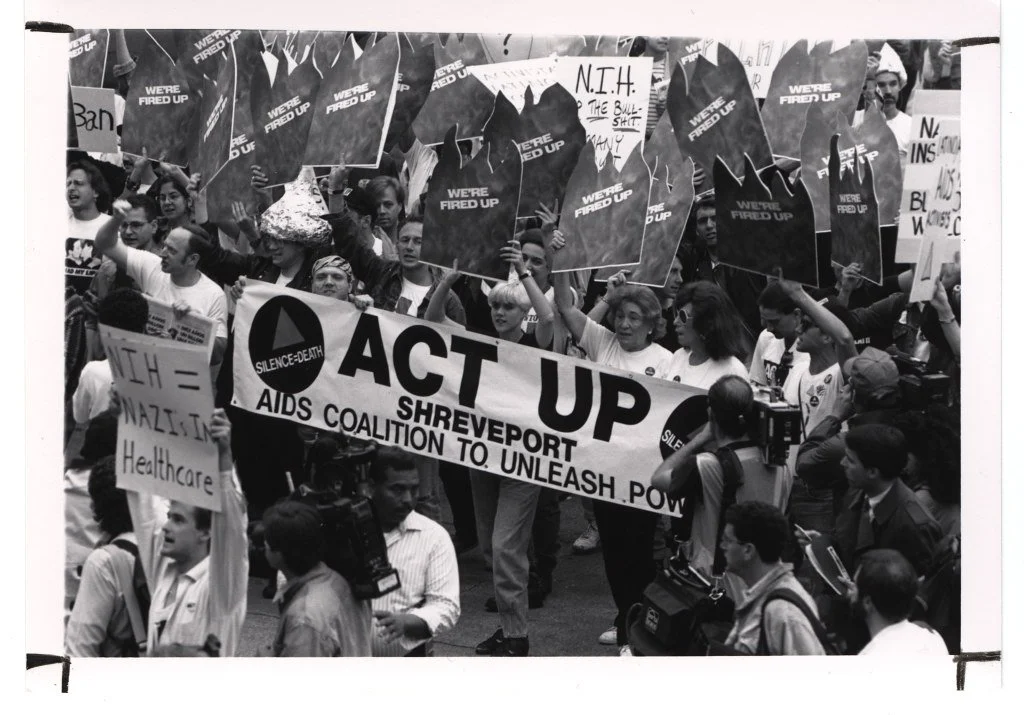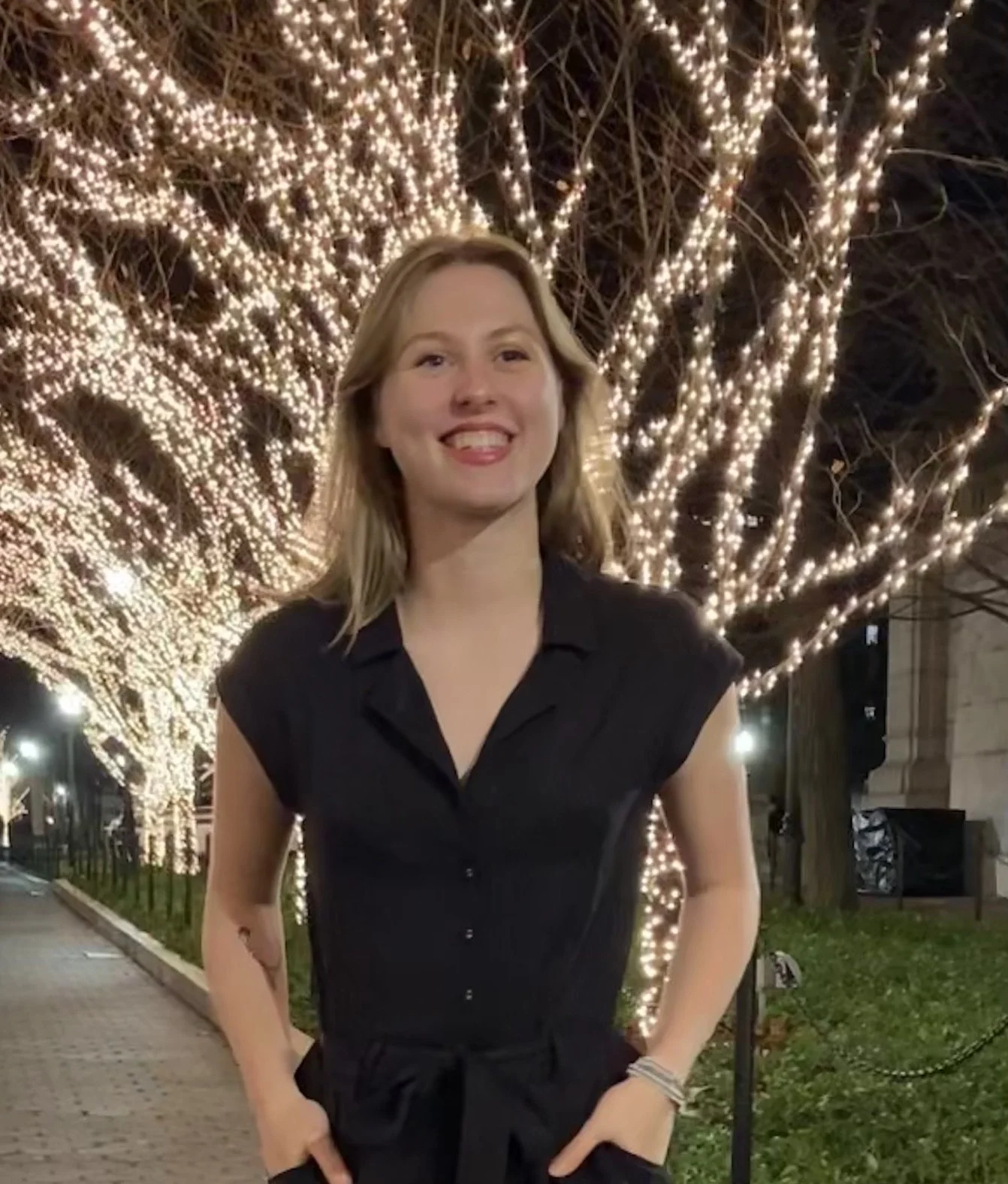This tiny island nation in Africa offers destinations exploring its complex colonial history, stunning beaches and unique outdoor adventures
Read MoreStarry Nights: 6 Stargazing Destinations on 5 Continents
Get excited for International Dark Sky Week by exploring a few of the best stargazing destinations the world has to offer.
Read More8 Reasons to Visit Oman
Oman is truly a feast of the senses—a remarkable getaway for anyone seeking a fulfilling adventure.
The Grand Mosque in Muscat, Oman. Madison Paulus
After returning from study abroad in Oman, I have a newfound admiration for the country’s history, culture, views and activities. The vitality of Omani culture despite outside influence is admirable and I could see it reflected everywhere I went. From the very first day, I felt welcomed and immersed within the Omani lifestyle. This trip was an incredible experience, inspiring me to share eight reasons why you should experience Oman.
1. Rich History
View of a mosque from the Nizwa Fort. Madison Paulus
Oman is the oldest independent nation in the region, brimming with about 1,000 well preserved historical sites. While civilization in Oman began around 100,000 years ago, many popular historical sites came about during Portuguese occupation between 1507 and 1650.
In Muscat, the capital of Oman, explorers can find several forts. The Muttrah Fort, which the Portuguese built in 1507 can be found at the heart of Muscat's coast. Here, travelers can gaze upon 500-year-old lookouts.
The Mutrah Fort serves as a vantage point for travelers as it is nearby several other must-see spots, including the Mutrah Market, Al Alam Palace and the National Museum of Oman. Many other castles and forts can be found strewn across Oman, including the Nizwa Fort and Jibreen Castle.
2. Fruitful Culture
A man making pottery at the Jibreen Castle. Madison Paulus
Oman boasts an impressive blend of cultures. The Omani empire once ruled an area spanning from the east coast of Africa up to present-day Oman. Because of the vast territory and major role in trade, African, Arabian and Asian influences can be found embedded within Omani culture.
Home to more than 130 various types of traditional dances and music, Oman’s performance arts delight travelers and locals alike. Omanis are also expressive through their dress. Women can often be seen in vibrant clothing featuring intricate designs that are unique to each region. Men wearing dishdashas dot the streets, sometimes sporting traditional Khanjars (daggers) on special occasions.
Omani hospitality is another key feature of Omani culture. Omanis are known to be warm and welcoming to travelers, sure to offer friendly interactions and generous gifts for guests including coffee, dates and frankincense. For those searching for opportunities to immerse in Omani culture, there are many festivals open to travelers, including the Muscat Festival and the Salalah Festival.
3. Culinary Diversity
A variety of spices at the Nizwa Market. Madison Paulus
As with the culture, Omani food features Arabian, Asian and African influences. Some renowned Omani dishes include Shuwa, Rukhal bread and Halwa. Shuwa is a unique dish saved for special occasions. Meticulously prepared, Shuwa consists of meat cooked in a clay oven underground for up to two days, giving way to a tender, spice-filled delicacy.
Rukhal bread is a delightful addition that can be found accompanying any meal. Traditionally cooked over flaming palm leaves, Rukhal bread is round and thin, often served with honey or date syrup in the morning or sprinkled across meat and rice dishes throughout the rest of the day.
Halwa is a labor of love, often symbolic of Omani hospitality. A sticky, gelatinous treat, Halwa is usually made by combining water, ghee, corn flour, sugar and additional flavorings such as rose water or saffron in a large copper pot. Beyond the restaurants and markets, an ideal place where explorers can indulge in Omani cuisine is the Muscat Eat Food Festival.
4. Unique Commodities
A display of Amouage perfume at the Mall of Oman. Madison Paulus
With an abundance of frankincense and other natural resources, Oman is home to many exceptional goods. Fragrances in particular are an Omani specialty, and Amouage is an exhibition of this expertise. A popular Omani luxury fragrance brand, Amouage draws from Oman’s natural wonders to create enchanting scents, incorporating locally sourced rock roses, ambergris and frankincense.
While the products aren't budget friendly for many people, travelers can tour the only Amouage factory in the world for free in Muscat, getting a behind-the-scenes look and while sampling their extravagant fragrances along the way.
If perfumes aren’t your thing, the smell of burning frankincense and oud can be experienced all over the country. For those who wish to bring the essence of Oman home with them, these products, along with traditional burners, can be found easily at shops and markets.
5. Vibrant Art
Hand-woven baskets on display at the Nizwa Market. Madison Paulus
Many art forms have been intertwined with Omani culture for thousands of years. Pottery is a 5,000-year-old tradition in Oman that is still present across the country. Holding great historical value, pottery has been integral in the lives of Omanis for thousands of years.
While pottery today is often decorative, its historical and cultural value has been maintained here. In the ancient Omani state of Bahla, explorers can buy pottery from local sculptures or even learn how to make their own at the Al Adawi factory.
Other intriguing Omani handicrafts include basket weaving and silversmithing. Hand-woven baskets made of date palm or other natural fibers can be found in markets across the country, and travelers can witness the process in action at the Nizwa Fort. Silver goods like khanjar (daggers) and jewelry can also be found throughout Oman’s markets, symbolic of Omani heritage and good fortune.
6. Comfortable Climate
A view of the landscape from atop the Nizwa Fort. Madison Paulus
Oman’s weather and climate vary significantly by region, easily accommodating travelers’ preferences. With the interior's dry deserts surrounded by southwest summer monsoons and hot, humid coastlines, Oman offers a warm getaway whether you like sun or rain.
Because of this variation, Oman is a year-round destination, with northern Oman attracting many during the months of October through April, and the South drawing explorers most during July, August, and September, according to a presentation by Zahara Tours.
7. Natural Wonders
Camels sit in the sand outside the Arabian Oryx Camp. Madison Paulus
Oman’s ecosystems feature a huge diversity of plants and animals, from rock roses and apricots to turtles and camels. With 20 official nature reserves, travelers are offered a wide array of destinations to appreciate Oman’s natural beauty from the mountains to the sea.
Some iconic destinations for explorers to witness nature at its finest include the Al Jinz Turtle Reserve and Daymaniyat Island, where you can swim with whale sharks as they migrate south every summer.
With several caves beneath the earth and many wonders like waterfalls and valleys above, Oman’s astonishing ecology is situated in equally breathtaking natural landscapes.
8. Adventurous Activities
A Dhow boat sailing in the Gulf of Oman. Madison Paulus
Travelers itching for activity have countless options in Oman. Hikers will feel right at home, with many trails at varying levels of difficulty found throughout the Hajar and Musandam mountains.
Travelers can also explore the desert on camel-back or by riding on ATVs. The Arabian Oryx Camp is a perfect spot for either, in addition to offering Bedouin-style accommodations and authentic Arab cuisine.
For those who prefer to spend time in the water, Oman’s nearly 1,300 miles of coastline offers beaches where travelers can swim and snorkel through blue waters.
Madison Paulus
Madison is a student at George Washington University studying international affairs, journalism, mass communication, and Arabic. Born and raised in Seattle, Washington, Madison grew up in a creative, open-minded environment. With passions for human rights and social justice, Madison uses her writing skills to educate and advocate. In the future, Madison hopes to pursue a career in science communication or travel journalism.
Graffiti Capitals: 9 of the World’s Best Cities for Street Art
From Argentina to Estonia, artists around the world commemorate and contribute to city culture through street art.
Street art by Cabaio Stencil in Bueno Aires, Argentina. Parisa. CC BY-NC-SA 2.0
1. Bogota, Colombia
Street art in Bogota, Columbia. McKay Savage. CC BY 2.0
Lying in the east Andes mountains, Colombia’s capital Bogota is home to blocks of mural-covered walls. While graffiti has been decriminalized since 2013, the road to get here was violent. In 2011, 16-year-old Diego Becerra was shot and killed by police for spray painting, causing an uproar among Bogota’s residents.
The following advocacy to decriminalize spray painting was successful. The government’s relationship with street art continued to evolve after Justin Bieber visited Bogota in 2013 and was allowed to spray paint with police protection. The hypocrisy of giving special license and support to the Canadian singer spurred further advocacy, and now Bogota’s government actively promotes spray painting and other forms of street art.
Today, travelers can revel in Bogota’s street art throughout the city, from the airport to downtown. Some must-see destinations include Distrito Graffiti, an industrial area where two whole blocks are decorated with vibrant paint, and La Candelaria, Bogota’s historical quarter featuring murals strewn throughout storefronts and parks.
2. Buenos Aires, Argentina
Street art in Buenos Aires, Argentina. Wally Gobetz. CC BY-NC-ND 2.0
Home of the record-breaking mural spanning over 20,000 square feet, Buenos Aires boasts a flourishing street art scene thanks to minimal restrictions and generally supportive attitudes.
Stimulating murals dot the Argentine capital from north to south. Here, artists use cityscapes as a canvas to pay homage to their history and culture through vibrant and satirical murals.
Travelers have access to a variety of ways to take in these works of art, from strolling about to partaking in self-guided or private tours. For those with tight budgets yearning to experience some of these masterpieces, there are several online exhibits only a click away.
3. Cape Town, South Africa
Street art in Cape Town, South Africa. Tsn92. CC BY 2.0
Situated among mountains on the Atlantic Ocean, Cape Town has a history drenched in creativity in spite of longstanding adversity. Areas like District Six maintained vibrant cultural and artistic diversity throughout Apartheid, while some areas such as Woodstock have had a post-Apartheid revival.
During the 1980s, Cape Town's graffiti culture materialized as a tool to resist apartheid, with artists like Falko One using their street art to address injustice. Despite 30 years having passed since the collapse of the Apartheid regime, segregation and inequity persist alongside the street art calling attention to them.
In February 2024, the eighth International Public Arts Festival took place in Cape Town. Each year, the festival offers locals and explorers alike an opportunity to immerse themselves in Cape Town’s street art culture.
4. Lisbon, Portugal
Street art in Lisbon, Portugal. Pedro Ribeiro Simões. CC BY 2.0 DEED
The evolution of Lisbon’s street art is exceptional, transforming a city with predominantly white buildings into one renowned for its color-filled streets over the past three centuries.
Color began to be incorporated into building designs during the 1750s, and street art as we know it today didn’t appear until the democratic revolution in 1974. Meanwhile, an even deeper past lies underneath the streets in the 2,000-year-old Roman Galleries, where visitors can find ancient inscriptions on the tunnel walls.
Now, buildings across the city serve as canvases for artists, with many spanning several stories. Lisbon street artists don’t limit themselves to spray paint. Artists such as Vhils and Bordalo II get creative with their methods, incorporating chiseling techniques and found objects into their work.
5. Lodz, Poland
Street art in Lodz, Poland. Aira. CC BY-NC-SA 2.0
Often referred to as the capital of Polish street art, Lodz is a city with a rich history in the arts, gaining recognition over the years for its audiovisual arts scene ranging from fashion to film.
Many organizations have taken initiatives to support and expand street art in Lodz. Since 2009 the Urban Forms Foundation has been at the forefront of Lodz's street art movement. This organization offers advice to urban artists while maintaining the Urban Forms Gallery, a collection of creatively coated walls intended to bring life and recognition to the community.
Local street artists like M-City and the Etam Crew enhance the landscape with murals in styles ranging from futurism to realism. Lodz draws urban artists from around the world, with the Urban Forms Gallery project engaging artists from eight countries.
6. Penang, Malaysia
Street art in Penang, Malaysia. Mohd Fazlin Mohd Effendy Ooi. CC BY 2.0
Hundreds of murals drape the skyline of Penang, Malaysia. The street art movement began in 2012 when the Penang Tourist Board commissioned Ukrainian street artist Ernest Zacharevic.
Street art in Penang has since been a means of reflecting community culture and values. Zacharevic’s murals center on local communities and history, and can be seen throughout George Town. In the same city, travelers can also admire pieces like the 12-mural series of stray cats created by local organizations using street art to call attention to issues like animal welfare.
7. Stavanger, Norway
Street art in Stavanger, Norway. Sílvia Darnís. CC BY-NC-SA 2.0 DEED
In Stavanger, Norway, explorers can gaze upon the paradox of traditional architecture contrasted with progressive street art. Here, travelers can find a plethora of urban masterpieces created by world-famous street artists like Banksy and local talent like Algebra.
The dynamic street art scene today can be traced back to the Nuart Street Art Festival. Since 2001, the Nuart Festival has gathered teams of street artists from around the world to collaborate on projects throughout Stavanger. Beyond the creation of new street art, the Nuart Festival contributes to Stavanger’s urban art culture by hosting events, tours and workshops around the city.
For those looking to take a step further into the world of street art, some street artists in Stavanger offer classes.
8. Tallinn, Estonia
Street art in Tallinn, Estonia. Karen Bryan. CC BY-ND 2.0 DEED
Although the emergence of street art in Tallinn, Estonia, is fairly recent, this city has much to offer to travelers seeking masterful creations on city walls. In 2016, an official street art program began, initially centered around street dance, but some initial mural painting provided building blocks for a soon-to-be burgeoning street art movement.
The following year, the Mextonia Festival brought Estonian and international street art into the spotlight. This cross-cultural festival was a gift from Mexico to celebrate 100 years of independence for the Baltic nation. Today, visitors can see collaborative murals from this festival incorporating folk mythology and symbolism. Over 30 murals from the Mextonia Festival dot highways and cover walls throughout the city.
9. Valparaiso, Chile
Street art in Valparaiso, Chile. Gabriel White. CC BY-SA 2.0 DEED
Located on Central Chile’s Pacific Coast and often referred to as the Jewel of the Pacific, Valparaiso Chile is known to be among the most tagged cities in the world. Some murals in Valparaiso created by artists like Roberto Matta date back to the 1960s.
A couple of the best places to view Valparaiso’s breathtaking street art are Templeman Street and the open-air street art museum in Bellavista. Valparaiso’s hilly terrain provides numerous viewpoints for street art gazing.
A unique piece created in 2012 by Inti Castro spans three buildings and can only be viewed from Paseo de Atkinson in Concepcion Hill and Carcel Hill. Castro’s horizontal giant is far from the only street art you can see at Concepcion Hill, which is a great starting point for self-guided tours.
Madison Paulus
Madison is a student at George Washington University studying international affairs, journalism, mass communication, and Arabic. Born and raised in Seattle, Washington, Madison grew up in a creative, open-minded environment. With passions for human rights and social justice, Madison uses her writing skills to educate and advocate. In the future, Madison hopes to pursue a career in science communication or travel journalism.
10 Best Places to Travel in the US this Spring
A guide to the most beautiful spots to experience in the springtime
Read More10 Places to See Before They Disappear
The casualties of industrialization and climate change.
Read More5 Animals at Risk of Extinction
The risk of depleting ocean resources and the practice of poaching is driving many vulnerable species to extinction.
Two elephants playing in a forest scene. Future Kiiid. CC0.
A growing number of the planet's animals are teetering on the brink of extinction. These critically endangered species face an uncertain future due to the dire effects of poaching, habitat loss, climate change and other environmental pressures. Wildlife populations of a variety of species have been declining in recent years in a phenomenon known as the Global Extinction Crisis. The risks this entails are a drop in biodiversity as well as decreased resource availability for people. Efforts to combat this trend include the protection of natural habitats, reduced pollution and the enactment of measures to restrict or eliminate overfishing and overhunting.
Blue Whale
Blue Whale Tail Deep Dive. Seabass London. CC by 2.0.
The blue whale, or Balaenoptera musculus, is the largest creature on Earth and a symbol of oceanic grandeur. Despite their colossal size, blue whales are surprisingly vulnerable due to various human-induced factors. Collisions with large vessels and entanglement in fishing gear pose grave risks to their survival. Furthermore, the pervasive issue of climate change has disrupted the availability of their primary prey, krill, as warming oceans alter the distribution of these tiny crustaceans. Efforts such as establishing marine protected areas, restricting boat speed and advocating for sustainable fishing practices are crucial steps to safeguard the future of blue whales.
Black Rhino
Black Rhino in the Savannah. Chris Clark. CC0.
The black rhinoceros, alternately diceros bicornis in scientific Latin, resides in climatically warm eastern and southern Africa in countries like Kenya and Zambia. They are the smaller of the two main African rhino species, the other being the white rhino, but just as threatened. Overall, the species is listed as “critically endangered”, but three subspecies of the rhinoceros, including the western and southern black rhino, have already been declared extinct. By the International Union for Conservation of Nature’s (IUCN) approximation, there are just under 6,500 black rhinos in Africa, a number currently increasing due to conservation efforts.. Despite this, they are threatened by habitat reduction and poaching, the animals long being prized for their famous horns. Between 1960 and 1995, the population suffered severe reduction in its numbers and survival rates because of this brutal practice. Conservation efforts, such as anti-poaching laws, community measures and habitat awareness are critical to preventing the complete disappearance of the black rhino from our planet.
Yangtze Finless Porpoise
Finless Porpoises Swimming. Foooomio. CC by 2.0.
The Yangtze Finless Porpoise (Neophocaena asiaeorientalis) inhabits the Yangtze River in China, and is the only living freshwater porpoise in the world. Members of this species are sleek and snoutless, with no fin on their dorsal ridge, the latter giving them their name. These aquatic creatures have adapted to the turbulent and often complex environment of the river, but they are still struggling; They are primarily threatened by overfishing, pollution, dam construction along the Yangtze and accidental entanglement in fishing nets and equipment. This reduces the population very quickly, so much that there are only between 1,000 and 1,500 viable cetaceans remaining currently. In order to combat the increasing annual decline, China has established finless porpoises as “first level protected species,” the highest level of protection the country offers.
Sumatran Elephant
Sumatran elephant in Tesso Nilo National Park, Indonesia. NonprofitOrgs. CC by 2.0.
The Sumatran Elephant (Elephas maximus sumatranus) is one of three subspecies of Asian elephants, native to the island of Sumatra in Indonesia. They have a smaller build than an African elephant and sometimes possess a curved back. The unfortunate fact about their population in the wild is that it has declined by four fifths 80% in the past three elephant generations. This is due to the illegal poaching for their ivory and their body parts, which further compounds the threats faced by the Sumatran elephant. Also because of deforestation and logging, a large portion of the forest in which they live is too small to contain a significant population. Because of the fragmentation of their habitats, the elephants stray into agricultural areas in search of food, which worsens elephant and human contact. Due to these factors, there are an estimated 2,800 elephants residing on all of Sumatra. Collaborative initiatives pertaining to reforestation and involving both the government and communities would be the best course of action in preserving the Sumatran elephant.
Hawksbill Turtle
Hawksbill Sea Turtle at Carey de Concha. USFWS/Southeast. CC0.
The Hawksbill Turtle, or Eretmochelys imbricata, is mainly found in subtropical/tropical areas of the ocean. It is distinguished by its flatter body shape and beakish sharp mouth. Hawksbill turtles play a huge role in maintaining the health of coral reef systems by controlling sponge populations. Like many iconic creatures, hunting represents the biggest encroachment on the reptile's livelihood, with poachers targeting the turtles for their eggs, skin and shells. Their beautifully patterned shells fetch an unfortunately high price on theblack market. In the last 30 years, turtle populations have declined by 80% because of other causes like climate change, plastic pollution, rising sea levels, and accidental capture in fishing gear. Because of these significant factors, there are possibly only 57,000 Hawksbill turtles left.
So how can we help? People can support conservation organizations by volunteering their time to the protection of endangered species. Your involvement or donations can help fund critical conservation projects. People can practice responsible tourism, choosing eco-friendly and ethical wildlife tourism options that do not harm natural habitats. Thirdly, you can advocate for and support initiatives that intend to restore habitats for endangered species, such as reforestation efforts and marine-protected areas. Finally, we can work to make pollution less of a concern by recycling and supporting clean energy to mitigate climate change.
TO GET INVOLVED
Find out more about the World Wildlife Fund, which works to eliminate the worst effects on animals remaining in the world and protect diverse species.
Discover SeeTurtleOrg’s mission, which includes volunteering trips and organizations that dedicate their resources to saving marine life, specifically sea turtles.
Find out about the Defenders of Wildlife, which works to prevent animals and their habitats from becoming vulnerable or imperiled, as well as aims to protect the health of susceptible species.
Riley Baker
Riley Baker is a first-year student at James Madison University majoring in Writing, Rhetoric, and Technical Communication. She enjoys elements of storytelling and creative writing and likes listening to music. In addition, she is interested in journalistic-style writing and editing and intends to focus on writing articles about lesser-known travel locations and impactful world topics.
Beyond Entertainment: 10 Social Action Films to Watch Now
Social action films advocate for justice and raise global awareness — here is some powerful cinema to watch on streaming and in theaters.
Within the realm of cinema, some films have transcended beyond just entertainment and have acted as powerful catalysts for social change. Social action films have served as a medium for presenting audiences with compelling stories while additionally shedding light on contemporary issues. Behind the central issues, these films advocate for justice and humanize marginalized voices, common themes to generate broader global relevance.
Such a blend of advocacy and storytelling has served as a powerful tool to raise awareness. With a type of transformative power, these films have illuminated social injustices and empowered audiences to rewrite their scripts.
1. “Praying for Armageddon” (Tonje Hessen Schei)
In this chilling documentary, Schei follows the influence of the fundamentalist Christian lobby on U.S. politics. The political thriller explores the consequences of the fusion of Evangelical Christianity with American politics—a weakened democracy—that could ultimately destroy our civilization. Driven by faith, the movement does not just want the world to end but is working to start such a spiral. (Festival streaming this year and upcoming)
2. “Bobi Wine: The People’s President” (Moses Bwayo)
In this powerful account of Ugandan leadership, Bwayo delivers a remarkable documentary about Bobi Wine. Wine, opposition leader and musical star, used his music to fight an authoritarian regime by Yoweri Museveni. Much of the film charts Wine’s unlikely rise from pop star to politician as he seeks to restore democracy and oust Uganda’s brutal and corrupt dictatorship. (Stream it on Disney+ and Hulu)
3. “Navalny” (Daniel Roher)
In this fly-on-the-wall documentary, Roher homes in on the anti-authoritarian Russian opposition leader, Alexei Navalny. Making its debut at the virtual Sundance Film Festival, the film has introduced the Western world to a voice of the opposition in a country governed by fear with intense geopolitical stakes. Much like Roher, viewers are quite literally watching history unfold as Navalny uncovers the truth about an attempt on his life, with a finale yet to be written. (Stream it on Amazon Prime Video)
4. “Call Me Dancer” (Leslie Shampaine)
In her heart-touching and hopeful documentary, Shampaine tells the story of a disadvantaged Indian teenager who struggles against his parents’ insistence to follow a traditional path. When he meets an Israeli ballet master, he is determined to make it as a professional dancer despite the odds stacked against him. Debuting at the Santa Barbara International Film Festival, the film has won awards here and at other festivals, inspiring audiences with its joyride of mentorship, perseverance and passion. (In theaters)
5. “The Persian Version” (Maryam Keshavarz)
In her energetic semi-autobiographical feature, Kesharvarz follows Leila, a young Iranian-American woman as she navigates her family and personal life. As a vibrant portrayal of culture clashes and generation gaps, Keshavarz illustrates an affecting story about what womanhood demands versus imagines through the immigrant experience with the American dream. Just as Leila tries to strike a balance in embracing her opposing cultures, the film equally strikes a balance between heart and humor. (Stream it on Amazon Prime Video and YouTube)
6. “The Mission” (Amanda McBaine)
On North Sentinel Island, the Sentinelese encounter a foreigner who tries to bring Christianity to them, an illegal venture that results in his death. With a compassionate and nuanced approach to retelling a tragedy, McBaine explores this contextual difference between murder and self-defense. The film presents a sorrowful but introspective look at colonialism and cultural superiorities long deserving of scrutiny. (Stream it on Hulu)
7. “Oppenheimer” (Christopher Nolan)
In his unique and nuanced portrait of Robert Oppenheimer, Nolan explores themes of unchecked bureaucracy and science run amok. The film highlights the genius of its central figure while examining the detrimental effects of the atomic bomb he built at the Los Alamos National Laboratory during WWII, a creation that we were not ready for, or rather one we should not have been trusted with. (Stream it on Amazon Prime Video and Youtube)
8. “Smoke Sauna Sisterhood” (Anna Hints)
Hints’s film follows a group of women who share their secrets and intimate experiences in the darkness of a smoke sauna. As a feminist film that reveals the infinite faces of womanhood, the women wash off any shame that was trapped within them and regain their strength. The sauna and the film feel like a work of reflective art, where stories of relatable pains and joys as women are weaved together. (Available for select streaming and on Vudu)
9. “The Menu” (Mark Mylod)
In this social commentary, Mylod satirizes elitism in the world of fine dining restaurants. Focusing on class anxiety and capitalistic greed, the film examines the ethics behind “eating the rich” and the hypocrisy of “ethical consumption.” Serving a tailored dish on a rigid perspective of the wealthy, the film portrays society’s tendency to pay a high price for what it wants, no matter how corrupt. (Stream it on Amazon Prime Video and Hulu)
10. “Origin” (Ava DuVernay)
Inspired by the 2020 book “Caste,” DuVernay presents an argument about the history and hierarchies of power in the United States. In order to understand these elements, people must look past race and see that caste sets the presumed supremacy of one group against the presumed inferiority of others. As an approach to simultaneously educate and entertain an audience, DuVernay examines the book’s age-old themes and gives an ambitious new way to process them. (Opening Jan. 19 in theaters)
Mira White
Mira is a student at Brown University studying international and public affairs. Passionate about travel and language learning, she is eager to visit each continent to better understand the world and the people across it. In her free time she perfects her French, hoping to someday live in France working as a freelance journalist or in international affairs.
5 Adventures in Borneo
Borneo, the third-largest island in the world, boasts an enriching culture and a variety of adventurous nature excursions.
Bohey Dulang—Borneo. JohnJoDeery. CC by 2.0.
Borneo, an island located in the southwestern portion of the Pacific Ocean, is the third-largest island in the world, and the only one that is shared by three countries—Malaysia, Indonesia, and Brunei. The Malaysian part of the island consists of the two states Sabah and Sarawak, with Indonesia holding sway over five provinces in what its citizens Kalimantan and Brunei possessing the smallest section of land named after the country itself. As a part of the Greater Sunda Islands group, Borneo is bordered by two other islands, Sulawesi to the east and Sumatra to the west. The island of Borneo has approximately 292,000 square miles of territory in total, and harbors a significant population of 21.26 million people. Even divided, Borneo is an intriguing and obscure place that most travelers are not aware of; its hot and humid climate makes for an ideal tropical destination. From the soaring heights of Mount Kinabalu to the mysterious depths of the Mulu Caves, the island provides many opportunities for adventurers.
Map of Borneo. Peter Fitzgerald. CC by 2.0.
Sea Diving in Sipadan Island
Scuba Diving in Sipadan Island. CC0.
Sipadan Island, located in the Celebes Sea and situated off the northeastern coast of Borneo, is renowned as one of the world's premier dive destinations, known especially for its marine biodiversity and pristine coral reefs. Diving in the waters surrounding Sipadan offers a scenic experience, where the coral gardens provide a backdrop to an incredible array of marine life. Schools of barracuda, jackfish and sea turtles are all present in these waters, so they’re easy to spot. The island's underwater landscape, featuring dramatic drop-offs and caverns, adds an element of excitement to the exploration. With its protected status as a national park under Sabah Parks, its limited dive permits and its no-fishing policy, Sipadan ensures a sustainable underwater environment, allowing divers to witness the beauty of the ocean.
Exploring the Ancient Mulu Caves
Caves of Mulu. Eric Lanning. CC by 2.0.
Exploring the Mulu Caves in Borneo involves a journey into the depths of one of the world's most fascinating landscapes. Situated in Gunung Mulu National Park, a UNESCO World Heritage Site, the Mulu Caves system is a network of limestone caverns, tunnels and chambers, shaped over millions of years. The expansive caves are full of stalactites and stalagmites, creating an otherworldly environment that transports visitors into a space of natural wonder. The Deer Cave, one of the largest subterranean passages globally, impresses with its vast chambers. Adventure-seekers can also participate in guided tours, which include crossing rope bridges and navigating through passages, providing a sense of exhilaration.
The World's Largest Floating Village in Brunei
At Kampong Ayer. Watchsmart. CC by 2.0.
Kampong Ayer, often referred to as the "The World’s Largest Floating Village," is a water town situated in the heart of Bandar Seri Begawan, the capital of Brunei. This settlement is one of the largest global stilted communities, consisting of intricately connected houses, schools, mosques and markets that rise above the Brunei River on wooden supports. The village has a history dating back centuries, with traditional wooden architecture and a lifestyle deeply rooted in the water. Approximately 13,000 people still reside in their traditional houses, and instead of using roads or cars as methods of transportation, water taxis take residents from one place to another. The water village showcases a unique way of life that one doesn’t see often, and it has endured for generations in Brunei.
Outdoor Adventures in Kalimantan
Batang Kawah River, West Kalimantan. DN.Zrr. CC by-NC-SA 2.0.
Kalimantan, the Indonesian portion of Borneo, is a treasure trove for outdoor enthusiasts seeking thrilling adventures and nature. The region is renowned for its dense rainforests, winding rivers and diverse wildlife, creating the opportunity for a variety of outdoor activities. Adventure seekers can embark on multi-day treks through the rainforests, seeing tropical flora and fauna and perhaps even getting the chance to discover orangutans. The rivers of Kalimantan offer opportunities for exciting activities such as white-water rafting, with rapids making the excursion more fun. For those seeking a more serene activity, cruising along the territory's scenic rivers on wooden boats provides a tranquil way to take in the breathtaking surroundings.
Hiking at Mount Kinabalu
Mount Kinabalu, Borneo. Paul Williams. CC by-NC 2.0.
Hiking Mount Kinabalu is an experience that beckons adventurers to the landscapes of Borneo. It is a challenging hike and rigorous pace, and usually can last around two days. As Southeast Asia's highest peak, standing proudly at 4,095 meters (13,435 feet), Mount Kinabalu dominates the Malaysian state of Sabah. The ideal time period for completing this excursion is between March and April. The ascent begins in the foothills and takes hikers through the ecosystems, from rainforests to meadows. There are even different routes you can choose to partake in, including the Ranau and Kota Belud Trails. The journey reveals panoramic views and a variety of flora and fauna—including 5,000 types of plants, 326 different birds and over 100 mammal species all on this single mountain. Mount Kinabalu, because of its partially difficult trek, is a physical accomplishment that leaves a lasting impact, making it a must-see in Southeast Asia.
Riley Baker
Riley Baker is a first-year student at James Madison University majoring in Writing, Rhetoric, and Technical Communication. She enjoys elements of storytelling and creative writing and likes listening to music. In addition, she is interested in journalistic-style writing and editing, and intends to focus on writing articles about lesser known travel locations and impactful world topics.
Where to Travel in 2024
From the ancient wonders of Egypt to the futuristic allure of Dubai, CATALYST PLANET presents the top 25 destinations for your 2024 travel itinerary. Whether you crave thrilling adventures or cultural immersion, there is something here for every traveler.
Read MoreCATALYST PLANET's 50 BEST BOOKS OF 2023
A wealth of captivating new books flooded the shelves in 2023, enticing readers with diverse narratives and ideas—here are our top picks. These books will take you all over the world, from Malaysia to Argentina, from Palestine to Turkey, and through all of the major social issues of our time.
Fiction
1. Covenant of Water
by Abraham Verghese
Abraham Verghese's "The Covenant of Water" intricately weaves a haunting saga across three generations in Kerala, South India, exploring a family's struggle with a mysterious pattern of drownings from 1900 to 1977. Amidst the omnipresent waters of Kerala, this poignant narrative delves into love, faith and resilience, creating a vivid portrayal of human endurance, medical progress and intergenerational sacrifices in a changing India—a captivating literary masterpiece hailed by Oprah Winfrey as "unputdownable."
2. Our Share of Night
by Mariana Enriquez
In 'Our Share of Night,' a father and son confront a sinister family obsessed with immortality, spanning time and escaping the clutches of a menacing cult across different eras from 1960s London to Argentina's turbulent history. This narrative of family, the supernatural, and queer themes poses the question: Can anyone escape fate, or will love and sacrifice prevail? It's a compelling work by a visionary Latin American storyteller praised as 'mesmerizing' by Dave Eggers.
3. The House of Doors
by Tan Twan Eng
In 1921 Penang, "The House of Doors" follows Lesley Hamlyn and her husband Robert, alongside writer Somerset Maugham and his secretary Gerald. Maugham, dealing with a troubled marriage and seeking inspiration, discovers Lesley's intriguing past involving Dr. Sun Yat Sen. This captivating novel explores race, gender and power dynamics within the British Empire, weaving a tale of complex relationships and hidden truths.
4. Small Mercies
by Dennis Lehane
In Boston's 1974 heatwave, Mary Pat Fennessy's quest for her missing daughter intertwines with the mysterious death of a young Black man. As she delves into dangerous inquiries, she clashes with the Irish mob amid the city's explosive school desegregation turmoil. Dennis Lehane's "Small Mercies" is a gripping thriller exposing criminality, power dynamics and the chilling realities of American racism during this tumultuous period.
5. Straw Dogs of the Universe
by Ye Chun
Straw Dogs of the Universe follows the journey of Sixiang, a young girl sold in America, desperate to reunite with her father, a railroad worker in California, amid the challenges presented by the anti-Chinese movement. This sweeping historical saga spans generations from Chinese villages to the American West, exploring family resilience and the struggle for survival in a country that relies on and rejects its laborers.
6. The Reformatory
by Tananarive Due
In 1950, in Gracetown, Florida, twelve-year-old Robbie Stephens, Jr., is sent to The Reformatory to defend his sister, Gloria. His gift of seeing ghosts turns from solace to a window, revealing the horrors within. As the boys vanish, Robbie learns survival from friends Redbone and Blue while Gloria fights to rescue him. Tananarive Due's haunting historical fiction, "The Reformatory," unravels the hidden truths of the Jim Crow South and the notorious Dozier School for Boys, illuminating long-buried tragedies through Robbie's gripping narrative.
7. The Heaven & Earth Grocery Store
by James McBride
In 1972 Pottstown, Pennsylvania, the discovery of a skeleton in Chicken Hill, a neighborhood where Jewish immigrants and African Americans lived side by side, unravels long-held secrets. James McBride's "The Heaven & Earth Grocery Store" delves into the intertwined lives of Moshe, who integrated a theater, and Chona, who ran a grocery store, revealing their struggles and the community's resilience against adversity.
8. If I Survive You
by Jonathan Escoffery
In the 1970s, Topper and Sanya fled Kingston, Jamaica's political violence for Miami, only to face exclusion and hardship as Black immigrants. Jonathan Escoffery's "If I Survive You" follows Trelawny, navigating financial turmoil, racism, and family struggles with resilience. Through humor and vibrant storytelling, Escoffery unravels the challenges of being between cultures, offering a profound commentary on survival in a world shaped by capitalism and systemic biases. This debut marks Escoffery as a distinctive voice, chronicling the grim and hopeful aspects of American life.
9. Enter Ghost
by Isabella Hammad
Actress Sonia Nasir returns to Haifa, facing her fractured connection to Palestine. She gets involved in a West Bank Hamlet production, finding camaraderie among Palestinian actors determined to cross barriers. This poignant novel explores diaspora and resistance in present-day Palestine, highlighting the transformative power of artistry amid occupation.
10. What Napoleon Could Not Do
by DK Nnuro
This book follows siblings Jacob and Belinda Nti from Ghana and Wilder, a Texan businessman. Their varied perspectives unravel the American dream—Jacob's visa struggles, Belinda's success in education, and her marriage to Wilder, who confronts racial challenges. This poignant narrative explores their aspirations and experiences, shedding light on the promises and pitfalls of life in the U.S., capturing dashed hopes and realized dreams.
11. Loot
by Tania James
Abbas, a gifted woodcarver, enters Tipu Sultan's service, crafting a grand tiger automaton for the Sultan's sons. As war wreaks havoc across India and Europe, Abbas collaborates with renowned clockmaker Lucien du Leze. When invited to France, Abbas discovers the tiger's disappearance after British forces loot Tipu's palace. His mission changes to retrieving the automaton from an English estate, testing his skills and loyalty amid a backdrop of plundered art.
12. Chain Gang All Stars
By Nana Kwame Adjei-Brenyah
"Chain-Gang All-Stars" follows Loretta Thurwar and Hamara "Hurricane Staxxx" Stacker, stars of CAPE's death matches in a profit-driven private prison program. As fan favorites, they compete for freedom while grappling with their relationship and the brutal nature of the games. Thurwar, on the brink of freedom, wrestles with the ethical toll on her fellow Links. This searing novel examines systemic racism, capitalism, and mass incarceration in America's prison system, offering a poignant reflection on the true meaning of freedom.
13. Kantika
by Rebecca Cohen
This novel paints a vivid portrait of Rebecca Cohen, the spirited daughter of Istanbul's Sephardic elite. Displaced in Barcelona due to financial loss, Rebecca navigates life's joys and hardships, from a failed marriage to motherhood, across Spain, Cuba and New York. Her story delves into identity, exile, and the female experience in work, art and love, emphasizing resilience amid suffering and embracing life's beauty. Elizabeth Graver's lyrical novel celebrates women's strength and determination in seizing their destinies.
14. No One Prayed Over Their Graves
by Khaled Khalifa
The lives of Hanna and Zakariya are altered forever as they return to their village near Aleppo, Syria, to find it devastated by a massive flood. Hanna, once a wealthy libertine, transforms into an ascetic mystic after losing everything, delving into the meaning of life and death. The novel navigates their lives in Aleppine society at the turn of the 20th century, capturing the rich tapestry of friendships, love, and societal changes amidst the city's diverse communities.
15. Crook Manifesto
by Colson Whitehead
In this novel, set from 1971 to 1976, furniture store owner Ray Carney grapples with a chaotic city, the NYPD's clash with the Black Liberation Army, and a return to the criminal world for Jackson 5 tickets. Pepper, Carney's partner, ventures into Blaxploitation shoots, encountering Hollywood stars and criminals while displaying his prowess. Amid Harlem's upheaval in 1976, Carney and Pepper uncover corruption while facing family challenges in a crumbling city.
16. I Will Greet The Sun Again
by Khashayar J. Khabushani
"I Will Greet the Sun Again" traces K's struggle with identity as a young Iranian immigrant in the San Fernando Valley, dealing with feelings for his friend Johnny while navigating his family's expectations. After returning from Iran, K grapples with reconstructing his identity in a changed world. Khashayar J. Khabushani's novel delves into the challenges of being queer and Muslim in America, depicting a tender journey of self-discovery and belonging.
17. Birnam Wood
by Eleanor Catton
A New Zealand landslide isolates Thorndike town, prompting a guerrilla gardening group, Birnam Wood, to seize an abandoned farm for financial stability. However, an enigmatic billionaire, Robert Lemoine, claims the land for an end-times bunker, sparking a clash of ideologies and trust issues. This gripping thriller explores human survival instincts, alliances and the complexities of human nature in a tense narrative.
18. Faraway World
by Patricia Engel
This short story collection portrays Colombian expats in New York City, a Cuban woman seeking her brother's stolen bones and a couple hustling in Miami, each grappling with their pasts. These intimate and panoramic stories capture regret's liminality, the vitality of community and moments of love, offering a compassionate view of human connections.
19. Same Bed Different Dreams
by Soon Sheen
Reimagining a world where the Korean Provisional Government persists, working covertly towards a unified Korea, this novel intertwines narratives and mysterious images. Author Soon Sheen, employed by tech giant GLOAT, discovers an unfinished manuscript linking various personalities, blending reality and fiction. This imaginative tale by the acclaimed author of "Personal Days" offers an alternate reality where a unified Korea feels within reach.
20. Victory City
by Salman Rushdie
"Victory City" narrates the epic tale of Pampa Kampana, a nine-year-old girl in fourteenth-century southern India, chosen by a goddess after a divine encounter. Over 250 years, her life deeply intertwines with the rise and fall of Bisnaga, a magnificent city, sown from magical seeds and eventually ruined by human folly. Pampa strives to empower women in a patriarchal society, yet the city's complexities grow beyond her control. Crafted as an ancient epic, this saga embodies the enduring power of storytelling through love, adventure and myth.
21. A History of Burning
by Janika Oza
In 1898, an Indian teen named Pirbhai works for the British on the East African Railway, committing a fateful act. Janika Oza's multi-generational epic spans continents and time as Pirbhai's family navigates the repercussions of his deed. Born in Uganda during colonial rule's decline, his granddaughters faced upheaval and fled Idi Amin's sadistic dictatorship in 1972. The family's scattering leads to a global journey, questioning loyalties and defining their place in the world. "A History of Burning" traces an intimate saga of family, complicity, and resilience across generations.
22. The Most Secret Memory of Men
By Mohamed Mbougar Sarr and Lara Vergnaud
Winner of France's highly prestigious Prix Goncourt, "The Most Secret Memory of Men" follows Senegalese writer Diégane Latyr Faye's quest in Paris to uncover the mysterious author of a scandalous 1930s book. It delves into history's tragedies and explores themes of exile, art and cultural convergence between Africa and the West, celebrating the timeless power of literature.
23. Tremor
by Teju Cole
"Tremor" is Teju Cole's riveting exploration of life's complexities through Tunde, a West African photographer in New England. Amidst historical reflections, racial tensions and personal revelations, the novel delves into time's passage and the human capacity for survival and joy. Cole's masterful storytelling in this realistic yet inventive work resonates with literature, music and the profound experience of existence.
24. Age of Vice
by Deepti Kapoor
"Age of Vice" delves into how the Wadia family's opulence is tainted by violence, power and desire in contemporary India. Ajay, Sunny and Neda navigate ambition, corruption and forbidden romance in a gripping tale that spans from villages to the metropolis of New Delhi, revealing greed's consequences.
25. Family Lore
By Elizabeth Acevedo
Flor holds a unique power: foreseeing death dates. When she plans a living wake, her sisters wonder about her intentions and their own hidden truths. As the Marte women gather for the celebration, Elizabeth Acevedo's "Family Lore" unfolds, intertwining past and present in a vibrant tale of sisterhood, legacy, and revelations over three significant days.
26. Let Us Descend
by Jesmyn Ward
"Let Us Descend" is a vivid reimagining of American slavery, following Annis' harrowing journey from the Carolinas to a Louisiana sugar plantation. Jesmyn Ward intricately weaves family, spirituality and resilience themes in this powerful tale of sorrow and redemption set against the haunting backdrop of the American South's landscapes.
27. The Deluge
By Stephen Markley
In a turbulent 21st-century world, "The Deluge" weaves a gripping narrative involving Tony Pietrus, a threatened scientist, and a diverse array of characters. Their interconnected journeys traverse landscapes from California to Wyoming, unveiling a tale of courage, chaos and hope amid an impending ecological crisis and political upheaval. This ambitious novel confronts sacrifices made for humanity's survival, capturing a pivotal moment in time with unparalleled depth
NonFiction
28. King: A Life
by Jonathan Eig
Jonathan Eig's "King: A Life" is an extensively researched and vividly written biography, offering a fresh perspective on Martin Luther King Jr. It delves into his complex relationships, internal struggles, and his pivotal role in reshaping American race relations. This landmark biography captures MLK's brilliance as a strategist and his unwavering commitment to justice, making his message as relevant today as it was in his era.
29. Waiting to be Arrested at Night
by Tahir Hamut Izgil
In "Waiting to Be Arrested at Night," Tahir Hamut Izgil recounts the harrowing ordeal of the Uyghur people in China under the government's brutal crackdown. As a poet and intellectual, Tahir experienced the persecution firsthand, witnessing the disappearance of friends and neighbors into internment camps. His book is a plea for global awareness of the crisis and a tribute to silenced Uyghur voices.
30. The Rediscovery of America
by Ned Blackhawk
This narrative spans five centuries, highlighting how Indigenous history has shaped America. The author unveils pivotal moments where Native nations influenced colonization, the American Revolution, the Civil War and 20th-century activism. Blackhawk's retelling emphasizes Indigenous peoples’ enduring resilience and impact on the United States' history and identity.
31. Cobalt Red
by Siddharth Kara
"Cobalt Red" uncovers the grim truth of cobalt mining in the Congo through personal stories. Siddharth Kara delves into the harsh realities of child labor, militia control and global tech reliance on Congo's cobalt. With a call for global awareness, Kara highlights the urgent need to address this human rights and environmental crisis.
32. The Half-Known Life: In Search of Paradise
by Pico Iyer
One of the world’s greatest travel writers, explores this 3.64 Pico Iyer’s exploration in “Paradise,” which takes readers across diverse landscapes and beliefs, challenging our notions of utopia and peace. From Iran to North Korea and even high up in the Himalayas, he questions the essence of paradise, pondering its existence in the here and now amid life's complexities and suffering. With decades of global experiences, Iyer delivers an original, transformative perspective on finding moments of paradise within our everyday realities
33. How to Say Babylon
by Safiya Sinclair
This memoir recounts the author’s struggle against oppression within a strict Rastafari household, finding her voice through poetry and education. The book delves into her journey of breaking free from cultural constraints to reclaim her autonomy and power.
34. Some People Need Killing
by Patricia Evangelista
This gripping chronicle delves into the Philippines' drug war under Rodrigo Duterte. With meticulous reporting, Evangelista uncovers the brutal killings carried out in the name of law and order, shedding light on the nation's frightening atmosphere and the human impulses behind such violence.
35. The 272: The Families Who Were Enslaved and Sold to Build the American Catholic Church
by Rachel L. Swarns
Unveiling Georgetown University's connection to slavery by tracing the Mahoney family's multigenerational story, this groundbreaking account exposes the Catholic Church's reliance on enslaved labor, sparking a national conversation about reparations and the Church's role in American history.
36. We Were Once a Family
by Roxanna Asgarian
This gripping expose delves into a tragic murder-suicide involving six children adopted by a white couple. "We Were Once a Family" uncovers systemic faults in the foster care system, revealing racial biases and neglect. Asgarian's immersive journalism highlights the lives of the adopted children, their birth families and the failures of a flawed system that continues to endanger vulnerable youths.
37. Liliana’s Invincible Summer
by Cristina Rivera Garza
This poignant memoir, "Liliana's Invincible Summer," chronicles her quest for justice following her sister's tragic murder by an abusive ex-boyfriend. Rivera Garza honors Liliana’s vibrant spirit in luminous prose, tracing her life and final summer of 1990. Through a blend of scholarly insight and personal narrative, she confronts her the loss of her sister, crafting a moving testament to resilience and the ongoing fight against gendered violence.
38. The Great Escape :A True Story of Forced Labor and Immigrant Dreams in America
by Saket Soni
The gripping story of immigrant workers trapped in dire conditions on the Gulf Coast. Their daring escape, march to Washington, DC, and determined hunger strike unfold against the backdrop of their fight for dignity and justice. Saket Soni's narrative reveals the realities of forced labor and the challenges these workers face in their quest for fair treatment and human rights.
39. The Land of Hope and Fear
by Isabel Kershner
This expose delves into the lives of Israel’s diverse citizens, capturing the nation's divisions, aspirations and challenges through vivid narratives and on-the-ground insights.
40. Built from the Fire
by Victor Luckerson
Subtitled "The epic story of Tulsa’s Greenwood District, America’s Black Wall Street," this book unveils the story of a thriving Black community before and after the Tulsa Race Massacre. Through personal accounts and generational experiences, journalist Victor Luckerson narrates the neighborhood's legacy of strength, struggle against racism and its fight for survival in the face of adversity and urban renewal.
41. Fire Weather
by John Vaillant
"Fire Weather" recounts the 2016 Fort McMurray wildfire, highlighting its implications in our worsening climate crisis. John Vaillant examines fire's historical impact on societies, intertwining the evolution of North America's oil industry and climate science with the devastating effects of contemporary forest fires. This urgent narrative portrays our world's vulnerability to fire in an era of escalating climate change.
42. Pageboy
by Elliot Page
This poignant memoir navigates the highs and lows of fame, revealing the inner struggle of self-discovery and authenticity. From Juno's success to the suffocating pressures of Hollywood, Page shares a candid journey toward genuine self-empowerment and acceptance in a world constantly trying to define us.
43. The Secret Gate
by Homeira Qaderi
The chronicle of the gripping escape of Afghan author Homeira Qaderi and her son, aided by American diplomat Sam Aronson during the tumultuous Fall of Kabul. Amid the chaos, Sam orchestrated their daring passage through a secret entrance at the airport, navigating danger and gunfire to ensure their safety. This poignant narrative encapsulates bravery and survival against the backdrop of a collapsing Afghanistan.
44. Winnie and Nelson
by John Steinberg
Jonny Steinberg explores the intricate marriage of Nelson and Winnie Mandela, revealing their differing political paths and personal struggles amid the fight against apartheid. Steinberg unravels the complex relationship, offering a compelling narrative about love, political divergence and its impact on South African history.
45. Anansi’s Gold
by Yepoka Yeebo
The author uncovers a captivating saga of post-independence Ghana, detailing a charismatic scammer's audacious plot to exploit the nation's newfound independence. John Ackah Blay-Miezah's intricate deceptions and the chase to find Ghana's missing wealth make for a gripping narrative entwined with Cold War politics, international finance and the quest for truth in history
46. A Fever in the Heartland
by Timothy Egan
Pulitzer and National Book Award-winning author Egan delves into the rise of the Ku Klux Klan during the 1920s. The book focuses on D.C. Stephenson, the charismatic leader behind the Klan's growth, and Madge Oberholtzer, whose testimony became instrumental in its downfall. Egan delivers a gripping narrative that uncovers this dark episode in American history with compelling detail and historical depth.
47. Crossings: How Road Ecology is Shaping the Future of Our Planet
by Ben Goldfarb
Delving into the significant impact of roads on wildlife and habitats worldwide, Goldfarb explores the harm caused by roads, from animal deaths to habitat destruction, while showcasing innovative solutions like wildlife bridges. The book highlights the urgent need to minimize these environmental impacts for the well-being of all living creatures.
48. Poverty By America
by Matthew Desmond
In his eye-opening book, sociologist Matthew Desmond reveals how the affluent contribute to persistent poverty in the United States. He highlights how the wealthy drive down wages, inflate housing costs and limit financial access for the poor. Desmond calls for a reevaluation of the welfare system and collective action to achieve shared prosperity and real freedom for everyone.
49. American Gun: True Story of AR-15
by Eugene Stoner
"American Gun" explores the AR-15's journey from its creation by Eugene Stoner to its polarizing impact on American society. Authors Cameron McWhirter and Zusha Elinson investigate the rifle's rise in popularity, its adoption by the military and its controversial role in mass shootings and gun debates. They offer a balanced view of America's relationship with the AR-15, examining its allure, devastating effects and the political tensions surrounding its regulation.
50. An Inconvenient Cop
by Edwin Raymond
Edwin Raymond, the highest-ranking whistleblower in NYPD history, unveils the flaws in modern policing. His memoir reveals systemic issues, including racial profiling, moral dilemmas for officers and institutional structures that reward bias. Despite personal and professional struggles, Raymond remains committed to advocating for justice and reform within law enforcement, envisioning a future where police prioritize serving communities over statistics.
Raeann Mason
Raeann is a traveler, digital storyteller, and guide writer, with a degree in Mass Communication & Media from the Walter Cronkite School of Journalism. She is passionate about a/effective journalism and cultural exchange, and is an advocate of international solidarity and people's liberation. Her work at CATALYST focuses on reshaping the culture of travel and hospitality to be more ethically sound and sustainable.
5 Reasons to Visit Slovenia
This captivating yet unfamiliar country in the east of Europe is a hub of culture and nature—harboring mountains, lakes and castles.
Read MoreOff the Beaten Path: 10 Places to Escape Overtourism
In a travel-hungry world, it’s time to celebrate lesser-known treasures while prioritizing eco-consciousness, intimacy and crowd-free escapes.
Read More4 Simple Ways to Go Vegetarian
Adopt an affordable eco-friendly diet by choosing budget-friendly vegetarian options, reducing high-polluting meat and dairy, and supporting sustainable food activism.
Fresh Produce. Paul Collins. CC BY-NC-SA 2.0
Embracing a vegetarian diet is a task many now find themselves considering, not only for its numerous health benefits, but also for the lifestyle’s tangible positive impact on the environment. While vegetarianism sounds fantastic in theory, many are dissuaded by concerns of affordability and the perceived difficulty of finding recipes that are tasty and not overly time consuming. People considering vegetarian diets are also frequently plagued by nagging questions about nutrition: How on Earth to get enough protein and ensure that my diet includes enough vital nutrients?
Fortunately, with proper planning and a few simple strategies, the switch to a plant-based diet can be both nutritious and budget-friendly. Switching from meat to plant-based options requires a holistic approach that prioritizes health, satisfaction and sustainability — both financially and mentally.
1. Embrace Plant-Based Proteins
Protein is a crucial component of any diet and gives us the energy we need to thrive and last throughout the day. Finding delicious alternatives to meat is something that can be rather daunting, but with these tips and suggestions of non-meat alternatives, the essential quest to get enough protein will not be too difficult. Legumes such as lentils, beans and chickpeas, are excellent options as they are not only rich in protein but also cost-effective. Buying these protein-packed staples in bulk can significantly reduce their per-unit price. Tofu and tempeh are other affordable plant-based proteins, often available at reasonable prices in local grocery stores. By incorporating these options into your diet, you can maintain a balanced nutritional profile without spending obscene amounts of money. More and more major grocery chains are beginning to offer vegan meat alternatives such as Beyond Meat, Impossible Food and Tofurky brands. While these choices satiate meat cravings, they tend to be more expensive and less accessible than nonproprietary high-protein plant products.
Legumes and Fresh Produce. Web4camguy. CC BY-NC-ND 2.0
2. Choosing Seasonal and Local Produce
Eating based on seasonal offerings of vegetables and other ingredients is not only better for the environment, it is also less expensive. The exportation of produce from far away places across the globe causes a significant increase in carbon emissions, while in-season crops tend to be cheaper and more abundant. Additionally, buying from local farmers' markets or joining community-supported agriculture programs can provide access to fresh, affordable and often organic produce. Frozen fruits and vegetables are also excellent options, as they retain their nutritional value and are typically less expensive than fresh options. By making use of seasonal and local produce, you can create delicious, cost-effective meals. Discovering farmer’s markets can be a fun weekend activity and help you discover locally sourced foods. Buying produce and food items directly from farmers is not only good for your diet; it supports small businesses that have a lighter impact on the Earth.
Fresh Vegetable Produce Options. Eltpics. CC BY-NC 2.0
3. Meal Planning and Cooking in Batches
One of the keys to affordability is effective meal planning. Try creating a weekly or monthly meal plan and make a shopping list accordingly, focusing on versatile ingredients that can be used in multiple recipes. This approach prevents impulse buying and reduces food waste. Batch cooking is another beneficial strategy. By preparing large quantities of meals and freezing individual portions, you can save both time and money. Utilizing leftovers creatively is key. For example, try adding new seasoning or ingredients to spice up what’s left in the fridge.
Dairy free milk alternatives. CC0
4. Snack Ideas and Non-dairy Replacements
Try making your own plant-based milk, such as almond, cashew, or oat milk, which is significantly cheaper than store-bought varieties. Similarly, you can prepare homemade veggie burgers, falafels, or energy bars using basic ingredients like beans, grains and spices. These items are affordable and will keep you satiated throughout the day. You would be surprised just how many foods are actually vegetarian — as long as you get used to double-checking food labels, you should be good to go.
Transitioning to a vegetarian lifestyle does not have to strain your wallet. By following these tips, you can affordably embrace a plant-based diet while enjoying its numerous benefits. By supporting local farmers, you also invest in sustainability of the food system in your region, strengthening the fabric of your community. It is important to cultivate a heightened awareness of the origins of our food and its effect on the planet, as this leads to progress toward a more mindful and responsible lifestyle. As long as we strive for a better understanding of where our food is sourced and its larger impact, we can work toward preserving.
Avery Patterson
A rising junior at Vassar College in New York State, Avery is a Media Studies and French double major. She is an avid reader, writer, and traveler. She loves to immerse herself in new cultures and is an avid explorer who loves being in nature. She is passionate about climate and social justice and hopes to use her love of writing as a catalyst for positive change.
Guatemala is a Hiking Heaven
With its lush vegetation, cloud forests, and volcanic topography, Guatemala is a hotspot for hikers from around the world.
Read MoreCATALYST PLANET Holiday Gift Guide
Explore 32 curated gifts that resonate with purpose and panache.
Read MoreThe Essential Palestine Reading List
Dive into this collection that illuminates the rich tapestry of Palestinian history and culture.
An aerial view of Palestine. CC0
Curated with a respect for the multifaceted narratives of the region, this collection encapsulates an array of perspectives, histories and lived experiences. Each title delves deep into the heart of Palestinian identity, the intricacies of the conflict and the resilient spirit of a people striving for justice and peace.
NON-FICTION
1. They Called Me a Lioness
by Ahed Tamimi and Dena Takruri
Ahed Tamimi, an iconic Palestinian activist, garnered global attention for her fearless activism against the Israeli occupation. Her imprisonment as a teenager after confronting an Israeli soldier in her village of Nabi Saleh turned her into a symbol of Palestinian resistance. This compelling memoir offers a firsthand account of Tamini’s experiences and the ongoing struggle for justice in Palestine, providing profound insight into the realities Palestinians face under occupation.
2. The Ethnic Cleansing of Palestine
by Ilan Pappé
In this seminal work, Ilan Pappé meticulously traces the events of the 1948 Palestinian exodus, revealing the hidden reality of forced displacement and the establishment of Israel. With unflinching detail, Pappé unearths harrowing stories of dispossession and illuminates the profound impact of this historical upheaval on the Palestinian people.
3. Love Is an Ex-Country
by Randa Jarrar
In her memoir, Randa Jarrar fearlessly challenges stereotypes about Muslims and Palestinians. Embarking on a cross-country journey, Jarrar proudly embraces her queer, Muslim, Palestinian and unapologetically confident identity, offering a raw, authentic exploration of the intricacies of life.
4. The Iron Cage: The Story of the Palestinian Struggle for Statehood
by Rashid Khalidi
Historian Rashid Khalidi masterfully dissects the intricate history of Palestinian nationalism and aspirations for statehood. With scholarly precision, Khalidi navigates through decades of political intrigue, chronicling the challenges, setbacks and enduring resilience of a people bent on self-determination and recognition on the world stage.
5. The Hundred Years' War on Palestine
by Rashid Khalidi
Rashid Khalidi's meticulously researched book paints a vivid historical tapestry from the 1800s to the present in this unshrinking account of the assault on Palestinian society.
6. We Are Not Here to Be Bystanders
by Linda Sarsour
Linda Sarsour's memoir portrays her journey from Brooklyn to becoming a powerhouse in activism, stirring profound reflections on solidarity and advocacy.
7. Except for Palestine
by Marc Lamont Hill and Mitchell Plitnick
Marc Lamont Hill and Mitchell Plitnick's critique navigates the inconsistencies within progressive circles, urging universal consistency in advocating for all oppressed communities.
FICTION
1. Mornings in Jenin
by Susan Abulhawa
Susan Abulhawa crafts a poignant, multigenerational narrative that traverses the emotional terrain of a Palestinian family's journey through displacement and loss. Through exquisite storytelling, Abulhawa offers a deeply moving portrayal of resilience amid a tumultuous landscape of conflict and highlights the enduring spirit of the Palestinian people.
2. The Tiny Journalist: Poems
by Naomi Shihab Nye
Naomi Shihab Nye, the esteemed Palestinian-American poet, weaves poetic wonders inspired by Janna Jihad Ayyad, Palestine's youngest journalist. Ayyad, capturing anti-occupation protests at the age of seven using her mom's smartphone, becomes Nye's muse in this must-read collection.
3. You Exist Too Much
by Zaina Arafat
Zaina Arafat's debut novel is a transcontinental tale which oscillates between the United States and the Middle East. A fresh voice in Palestinian-American literature, Arafat artfully dismantles Israel’s pinkwashing while unraveling the complexities of Palestinian society for diverse readers.
4. Enter Ghost
by Isabella Hammad
Isabella Hammad's evocative narrative navigates modern-day Palestine, delving into the artist's struggles amid diaspora, displacement, and the shadow of occupation.
5. Evil Eye
by Etaf Rum
Etaf Rum's exploration of womanhood as a Palestinian American is a profound journey through intergenerational trauma, clashes of culture and labyrinthian family dynamics.
6. Salt House
by Hala Alyan
Set in the aftermath of Israel’s conquest of the West Bank and Gaza in the 1967 Six-Day War, "Salt Houses" chronicles a Palestinian family's odyssey from their homeland to Kuwait, painting a poignant legacy of longing and displacement passed through generations.
7. Mother of Strangers
by Suad Amiry
"Mother of Strangers" presents a cinematic love story against the backdrop of the Nakba in Jaffa, weaving themes of love, loss, and a nation's upheaval.
Raeann Mason
Raeann is a traveler, digital storyteller, and guide writer, with a degree in Mass Communication & Media from the Walter Cronkite School of Journalism. She is passionate about a/effective journalism and cultural exchange, and is an advocate of international solidarity and people's liberation. Her work at CATALYST PLANET focuses on reshaping the culture of travel and hospitality to be more ethically sound and sustainable
7 Unique Wedding Traditions from Around the World
Beyond vows and wedding rings, these seven wedding customs exhibit international traditions of love.
A newly wedded couple. Min An. CC0.
Love is universal, but also multifaceted and varied. For couples that choose to get married, the universal yet unique nature of love translates into exciting wedding traditions around the world. Although some couples opt to create their own contemporary commemorations, many lovebirds look towards cultural customs when celebrating their big day. Whether during the ceremony, reception or pre-wedding festivities, global traditions persist and are honored in modern weddings. For centuries couples have developed and practiced these seven ways to display their affection and commitment on, around and after their wedding day.
1. Mehndi — India, Pakistan, Middle East, Africa
A bride displaying her Mehndi. Qazi Ikram Haq. CC0.
Mehndi, also referred to as Mehendi and/or Mehandi, is an intersection of celebration and art. Although its country of origin is unclear, this body art, made from dry, powdered leaves of the henna plant, is practiced in India, Pakistan, some countries in Africa and parts of the Middle East; many historians claim that Mehndi originated as a practice in India at least 5,000 years ago. It can be worn at Hindu, Sikh and Muslim weddings. The henna plant is incorporated into a paste, often dark brown or reddish brown in color, that is used to create intricate designs on the hands and feet of the bride. These beautiful designs, painted during a pre-wedding body painting ceremony, can include floral patterns, religious figures, the names of the bride and her partner, and even personal, sentimental details. Wearing Mehndi during a wedding is said to bring good luck and health to the couple’s marriage.
2. Cutting the Tie — Spain
A selections of ties.
Although cutting up an article of clothing on a person’s wedding day may seem alarming, this tradition, hailing from Spain, is conducted with entirely good intentions. In a post-wedding ceremony — during the reception — a groom's tie is cut up into tiny pieces by the groomsmen or close friends. The pieces of the tie are then extravagantly auctioned off to wedding guests in exchange for modest, or even large, sums of money. Despite guests only receiving a small sliver of fabric after gifting their own money, the purpose of auctioning off the tie is to give the groom and their partner one last monetary gift. Beyond representing financial abundance and luck, “cutting the tie” also represents the guests’ investment in and good intentions towards the couple.
3. The Symbolism of Red — China
Red wedding invitations. RDNE Stock Project. CC0.
Not attached to one specific element of the ceremony, the color red is often incorporated into weddings in China. The rise to popularity of the color red may have begun during the Ming Dynasty, over six hundred and fifty years ago. Red can be worn as the primary color of various garments — whether they be suits, dresses (the bridal gown is often called a qipao), jackets or veils, along with floral arrangements, candles, invitations and other decor. Perhaps the versatility and prominence of red can be attributed to its many meanings. Red can symbolize luck, joy, prosperity, happiness, honor, love, loyalty and even fertility.
4. Money Spray — West Africa
Nigerian Women wearing Iro and Buba Dance at a Wedding. Jeremy Weate. CC0.
This tradition is straight out of a couple’s dream. In this custom, which is popular in Nigeria and other parts of West Africa, but specifically originated with the Yoruba people in Nigeria’s Southwest, the newly-wedded couple is showered with money at their reception by family and friends. People dance and laugh while spraying the money, creating a palpable upbeat energy. During the reception and money spray, the newlyweds commonly wear traditional garments of the Yoruba people. Brides wear an Iro and Buba, a combination of draped and wrapped fabric on top of a blouse that is often colorful and/or patterned, and grooms wear an Agbada, an elegant loose-fitting robe. The subsequent money spray symbolizes good fortune and happiness for the couple that guests feel.
5. Claddagh Ring — Ireland
A Claddagh Ring. Royal Claddagh. CC BY 2.0.
The Irish tradition of wearing a Claddagh ring symbolizes a person’s relationship status and, more specifically, can visually depict their shift into marriage. The Claddagh ring is made up of hands grasping a heart adorned with a crown. Depending on the hand the ring is worn on and direction of the heart, different relationship statuses are depicted: wearing a Claddagh ring on the right hand facing outwards depicts a single status, while the right hand facing inwards indicates the person is in a relationship; the left hand facing outwards represents engagement, and the left hand facing inwards shows that the person is married. Claddagh rings can serve purely as the engagement and wedding rings, or can be worn in addition to international-style Western wedding and engagement rings. Commonly worn by brides, Claddagh rings can be passed down through generations of women in families.
6. Stefana — Greece
A floral Stefana bridal crown. Faylyne. CC BY 2.0.
Ornate and delicate, Stefana are crowns commonly worn during Greek Orthodox Wedding Ceremonies. Although Stefana were traditionally made of vines, branches and flowers, modern Stefana can be made of metal with gemstones. Stefana are worn by both partners during the wedding and, during the wedding ceremony, are connected by a ribbon or thread going from one person’s head to the other. The ribbon symbolizes the strong connection between the couple, and the crowns as a whole can symbolize unity, love, faith and loyalty. During a traditional Greek Orthodox Wedding ceremony, these crowns are also blessed by a priest.
7. Hapgeunrye, or Cup Drinking — Korea
An example of a Metal Cup Set. CC0.
In Korea, Hapgeunrye is a ceremony where the couple drinks from the same cup. The tradition, however, varies depending on the region and preferences of the couple. In some cases, the couple will drink from the same metal cup while in others the couple will drink from two halves of the same gourd. In both cases, the rite occurs during the wedding ceremony itself and the liquid drunk from the cup is often a type of liquor. This custom symbolizes the couple being united as one entity, recognizing their respect for each other and the harmony they hope will be fostered in their relationship.
Carina Cole
Carina Cole is a Media Studies student with a Correlate in Creative Writing at Vassar College. She is an avid journalist and occasional flash fiction writer. Her passion for writing overlaps with environmentalism, feminism, social justice, and a desire to travel beyond the United States. When she’s not writing, you can find her meticulously curating playlists or picking up a paintbrush.
The Global Social Ladder: The Best and Worst Countries for Social Mobility
The World Economic Forum's Global Social Mobility Report 2020 unfolds a gripping narrative.
Income disparity is the cause of social stratification. Steven Depolo. CC BY 3.0 DEED
Have you ever wondered about the likelihood of moving up the social hierarchy, even if you were born into a less advantaged position? This is where the notion of social mobility comes into play. While the understanding and implications of social mobility can differ, at its core, it represents the potential for individuals to improve their socio-economic status relative to their current position in society. In nations with robust social mobility, individuals from more modest beginnings have an increased likelihood of attaining a higher social status.
With this concept in mind, the calculation of social mobility takes center stage as a vital concern. Social mobility encompasses two primary facets: horizontal and vertical. Horizontal mobility takes place when an individual changes jobs while maintaining their overall societal status, often occurring when transitioning between similar occupations. Conversely, vertical mobility represents the movement from a lower societal position to a higher one, or vice versa.
The World Economic Forum, an international non-governmental organization advocating for multinational corporations, presented its Global Social Mobility Report for 2020, assessing and ranking 82 countries. This comprehensive report evaluated five critical indicators: education, access to technology, healthcare, social safety nets, and employment opportunities. In this examination, we will delve into some of the countries that secured the highest and lowest positions in the report, exploring the economic, historical, and societal factors that shape their levels of social mobility.
Countries with highest social mobility ranking
Interestingly, the top five nations boasting the highest social mobility—Denmark, Norway, Finland, Sweden, and Iceland—all hail from the Nordic region and thrive under the welfare-state model. This system, blending free-market capitalism with significant wealth redistribution, ensures free public services like education and healthcare, along with substantial pension payments for retirees. The Scandinavian countries owe much of their model's success to a relatively flat social hierarchy, shared history, societal evolution and cohesive societies. In contrast, North American nations like the United States and Canada, despite promoting upward mobility, deviate due to their resistance to extensive government programs and high tax rates seen in Europe, resulting in a distinct welfare landscape that differs significantly from the Nordic model.
1. Denmark-85.2
The capital of Denmark. rawpixel.com. CC0 1.0 DEED
Denmark has earned its top ranking in social mobility due to its outstanding performance in various metrics, particularly in the context of low-income families reaching median income. Assuming constant relative social mobility across these countries, Denmark stands out, with an estimated two generations needed to reach median income, as opposed to six in France. This achievement contributes to lower income inequality in Denmark. With a remarkable score of 82.7 and a third-place ranking on the Fair Wages pillar, Denmark offers a healthcare system that is both high quality and equitable. The national government allocates block grants from tax revenue to regions and municipalities responsible for healthcare provision. Every registered Danish resident is automatically enrolled in publicly funded healthcare, which is largely free at the point of use. Registered immigrants and asylum seekers are also covered, while undocumented immigrants have voluntary access to acute-care services. Denmark also excels in social protection, which involves subsidized day care, special support to children, young people and their families and robust housing allowance. Denmark ranked third in this category. This achievement is rooted in the long-standing trust within Danish society and the "universal welfare model," where all citizens are entitled to fundamental welfare benefits and services solely based on their citizenship. This model is designed to support the integrated capitalist market economy that characterizes Danish society.
2. Norway - 83.6
Skyline in Bergen, Norway. Jim Trodel. CC BY-SA 2.0
Norway, another Nordic nation, secures the second position in the realm of social mobility. Boasting low income inequality and an astonishing ability to reach median income within just two generations, Norway stands out prominently in the global landscape, particularly in its robust social safety net, where it ranks fourth worldwide. What sets Norway's social safety net apart is its commitment to maintaining high living standards and minimizing income disparities. For instance, daycare expenses for a family with three children total around $1,100 per month, significantly less than market rates. Education is entirely free at all levels and most Norwegian public, government-funded institutions have no tuition fee. Educational attainment is exceptionally high due to Norway's longstanding commitment to ensuring that all young people complete 13 years of formal schooling. Consequently, Norwegian residents are known for their outstanding workforce participation rates. Furthermore, active participation in various groups and associations enriches Nordic culture, fosters democracy and enhances overall quality of life. Norway's reputation as "a secure and transparent place to do business," as indicated by the 2021 Heritage Index of Economic Freedom, is a testament to its fair legal system, transparent laws, and political stability.
3. Finland - 83.6
A market in Finland. City Clock Magazine. CC BY-NC-SA 2.0
Finland secures the third spot in global social mobility, largely attributed to its relatively high income mobility. This means that being born into a wealthy family in Finland provides some advantage, but the impact on a child's future earnings is fairly low. For example, a doubling of parental income in Finland leads to a 15% increase in future salary, in stark contrast to 50% for the United States and 60% for China. Finland prides itself on its inclusive education system, ranking second worldwide. Irrespective of their educational needs or abilities, all students are typically taught in the same classrooms. Only children with the most significant educational requirements receive instruction in special classes or schools. Additionally, Finland takes pride in its robust social protection coverage, which extends to both those who work in the country and permanent residents. This comprehensive system supports individuals during parenthood, encompassing maternity, paternity, and parental allowances, as well as allowances for parents raising sick or disabled children.
4. Sweden - 83.5
Stockholm City Hall, Sweden. Stefan Lins. CC BY 2
Sweden, a Scandinavian nation, exhibits generally high intergenerational social mobility, which pertains to the link between a parent’s socioeconomic status and that of their child. A century ago, Sweden had relatively low levels of wealth redistribution compared to other European countries, and even higher income inequality than the United States. Nonetheless, Sweden’s rising social mobility as a welfare state can be attributed to high rates of internal migration and the robust economic growth of its pre-World War I economy. In the early 20th century, Sweden began developing its welfare state, and between 1945 and 1975, it expanded significantly. The “Swedish Model” gained prominence during this period due to its consistently growing economy, neutral stance in World War II, and a populace with similar cultural backgrounds. Nevertheless, Sweden’s welfare state and its measurement of social mobility have faced criticism for promoting substantial tax cuts, reducing funding for welfare programs, and increasing the involvement of private businesses in delivering public services. Studies examining surnames associated with the upper class have revealed that conventional methods tend to overstate the rates of underlying social mobility. Remarkably, the Swedish aristocracy from the 1700s still maintains its elite status, albeit while slowly being dissolved into the broader population.
5. Iceland - 82.7
Reykjavik, Iceland.Berit Watkin. CC-BY 2.0
Iceland stands out for its impressive track record of achieving high social mobility, and a significant contributing factor to this success is its established family policy. The support for women working outside the home has been ingrained in Iceland's family policy for an extended period. Consequently, the country boasts one of the highest rates of female labor force participation globally, reaching 75% in 2020. In terms of gender equality, Iceland surpasses many other nations, demonstrating a lower male-female disparity. The equitable distribution of the burden of child rearing between genders is another notable outcome of Iceland's family policy, where factors such as kindergartens and parental leave play pivotal roles. In Iceland, a child is entitled to an impressive 12 months of parental leave, with six months allocated for each parent, of which six weeks are shareable. Additionally, the impact of housing costs is minimized, as only 25% of low-income families pay more than 40% of their income for housing. Iceland also takes pride in providing its citizens with access to technology. The country maintains its top position globally in preserving internet freedom, ensuring nearly universal connectivity, minimal restrictions on internet content, and robust online rights safeguards. In 2021, an outstanding 98.36 percent of households in Iceland had internet connectivity.
Countries with lowest social mobility ranking
Nations experiencing lower social mobility worldwide are predominantly situated in the global South, and are marked by economic stagnation, political instability and a recurring history of socioeconomic segregation. These challenges establish a pernicious cycle, particularly in Africa and Middle Eastern countries, significantly impeding the upward mobility of underrepresented communities. The struggle arises from a complex interplay of factors, making it imperative to address economic disparities, political turmoil, and historical injustices for sustainable improvement.
1. Cote d'Ivoire - 34.5
Côte d'Ivoire, Ghana border post. jbdodane. CC BY-NC-ND 2.0
In the past two decades, Cote d'Ivoire, a West African jewel boasting beach resorts, rainforests, and a French-colonial legacy, grapples with persistent inequalities. These disparities are discernible in the landscape, from the prevalence of luxury items and expensive furniture stores to the emergence of French supermarkets, which are confined to the purview of the well off. The social and economic fabric of the country is intricately woven by centuries of cross-cultural influences, trans-Saharan and coastal trade, and local innovations. The imposition of colonial rule and the shift to independence disrupted established patterns of life, leading to societal and cultural transformations by the 1980s, shaped by responses to disruptions and government policies. Inequality is caused especially by access to power, drinking water, education, housing style and place of residence (urban or rural residence). The Ivory Coast's middle class, primarily prosperous farmers, traders, and professionals in administration, education and healthcare, remains a small minority.
2. Senegal - 36.0
Saint-Louis, Senegal. World Bank Photo Collection. CC BY-NC-ND 2.0
Nestled in West Africa, Senegal emerges as one of the countries grappling with limited social mobility. During the colonial era, significant earnings from major companies favored foreigners and the local nobility. Post-independence, the government's nationalization initiatives favored a privileged few, sparking a renewed struggle for status and authority. In line with other Sub-Saharan African nations, Senegalese societies, rooted in shared traditions, perceive hierarchy as fundamental to their political and economic organization. Senegal’s largest ethnic groups, despite cultural disparities and historical tensions, share a caste-based social structure with distinct roles. In Dakar, for example, seeking employment for respect and authority, urban males frequently base their decisions on class perceptions. The economic challenges faced by young men often translate into prolonged singleness, as expectations for traditional roles remain unmet. However, the prevalence of inexperienced and illiterate workers, coupled with limited job opportunities, often hinders the ability to challenge labor code violations, resulting in subpar working conditions. Despite these challenges, Senegal modestly progressed in addressing the worst forms of child labor in 2022, collaborating with the United Nations Office of Drugs and Crime to establish new procedures for identifying and investigating human trafficking incidents.
3. Cameroon - 36.0
UN Women Humanitarian Work with Refugees in Cameroon.UN WomenFollow. CC BY-NC-ND 2.0
In the heart of Central Africa, the city of Cameroon unfolds as a captivating tale of social dynamics, shaped by the rich tapestry of cultural, religious, and political traditions. Post-World War I, the nation was carved into British and French mandates, giving birth to the intriguing Anglophone region in the Southwest and Northwest Regions. Here, Pidgin English takes center stage as the lingua franca, while the echoes of English education and legal systems resonate. Meanwhile, for many ethnic groups in Cameroon society is tied together by a hierarchical social structure that encompasses various groups, from royalty to slaves, within conventional norms. As traditions intersect with contemporary realities, Cameroon's health landscape emerges as a pivotal chapter. Despite commendable drops in leading causes of death like HIV/AIDS and malaria, geographic imbalances persist. A substantial 70% of regions grapple with acute shortages in health personnel, with ratios plummeting below 1.5 per 1,000. The departure of 232 physicians and 205 nurses from the public sector underscores the challenges, tied to unfavorable working conditions and constrained career pathways.
4. Pakistan - 36.7
Pakistan. Asian Development Bank.CC BY-NC-ND 2.0
In Pakistan’s 2020 National Human Development Report, the UNDP explores The Three Ps of Inequality: Power, People, and Policy. It unmasks elite strategies for systemic control, disclosing that productive elites inflicted a staggering $6.34 billion in economic losses on the manufacturing sector in the fiscal year 2017–2018. The military dominates the country, establishing extensive corporate empires, fortifying against citizen uprisings and exerting control over elections. Much like its subcontinental counterpart Bangladesh, Pakistan also grapples with substantial challenges in achieving educational quality and equity, notably in the student-to-teacher ratio across all educational levels. The country is marred by corruption and contends with a lack of political stability and protection from violence — essential elements for constructing inclusive institutions that can benefit all citizens. A formidable learning poverty issue persists, with a staggering 75% of the population affected. This stark reality is reflected in the disappointing allocation of only 2.0% of its GDP to education, while a considerable 4% is directed toward defense. The historical emphasis on Islamic ideology and fundamentalism further complicates the educational landscape. The challenges are further exacerbated by the compounding impact of COVID-19 and the 2022 floods. According to the Human Capital Review, to ensure the retention of all children in school and enhance the quality of instruction, Pakistan would need to allocate an unprecedented 5.4 percent of its GDP — an unimaginable financial burden for the majority of Pakistani families.
5. Bangladesh - 40.2
View of Dhaka, Bangladesh. United Nation Photos. CC BY-NC-ND 2.0
Social stagnation has emerged as a pressing concern in Bangladesh, primarily due to the inadequacy of education resources. Bangladesh received the lowest score in Lifelong Learning, particularly highlighting deficiencies in level of employee training, policies for the active labor market, and the digital literacy rate among the active population. In 2019, The Human Capital Project delved into the learning poverty situation, defining it as the inability to read and comprehend a brief paragraph by the age of ten in Bangladesh. The findings were alarming, indicating that a significant 55% of children in the country fall below the minimum proficiency level. Additionally, less than 12% of the population enrolled in colleges or universities in 2010. The absence of a standardized curriculum for teachers in Bangladesh adds a layer of complexity to the education system, compounded by a scarcity of highly qualified teachers capable of instigating transformative changes. Another challenge stems from the severe impact of climate change, particularly on global south countries like Bangladesh. Extreme weather events, such as floods, cyclones, and hurricanes, pose a threat to school operations, infrastructure, and the displacement of students and teachers. Bangladesh Education Statistics reveal that a staggering 25,430 educational institutions are situated in disaster-prone locations. Children in these areas, especially those with disabilities and from impoverished backgrounds, are at a heightened risk of being excluded from educational opportunities.
The potential to ascend the social hierarchy rests on personal merit, yet is intricately linked to the political, societal and economic system that allows individuals to navigate their wealth and social status. In analyzing countries with the highest and lowest social mobility, these variables may not fully capture each individual's likelihood of success, as they are also influenced by factors like a nation's size and social cohesion (as evidenced in Nordic countries). Nonetheless, this exploration sheds light on the push and pull dynamics guiding physical mobility across various corners of the world.
Hope Zhu
Hope is a Chinese international student at Wake Forest University in North Carolina studying sociology, statistics, and journalism. She dreams of traveling around the globe as a freelance reporter while touching on a wide range of social issues from education inequality to cultural diversity. Passionate about environmental issues and learning about other cultures, she is eager to explore the globe. In her free time, she enjoys cooking Asian cuisine, reading, and theater.
5 Historical Epidemics that Changed the World
Disease outbreaks are inherent to a populous, globalized world.
Doctors and nurses in biohazard suits during the 1918 Spanish Flu epidemic. National Museum of Health and Medicine. CC0.
Pandemics have been a part of the human story since the agricultural revolution in 10,000 BC. Agriculture gave people the ability to create more food than they ever had before, which meant that the human population soared. People began packing together and settling down in large communities without modern sanitation, creating the ideal conditions for the spread of disease. As time went on, larger and larger communities established extensive trading networks with the ability to spread disease across continents.
With each disease outbreak, humanity has developed better defenses and practices to help prevent catastrophic losses. However, as long as population sizes continue to rise and the global community becomes ever more interconnected, worldwide pandemics will always be something that humanity must contend with.
This trend towards an increasingly populous and interconnected world is what fueled the global sweep of the COVID-19 pandemic. As Amesh Adalja, MD, a senior scholar at Johns Hopkins Center for Health Security said, “Viruses used to spread at the speed of a steamboat. Now, they can spread at the speed of a jet. In that sense, we’re more at risk.” The only way to adapt to the expanding threat of disease is to learn from the past and prepare for the trends of the future. Below is a list of some of the most devastating pandemics in history and how humanity’s response to disease changed because of them.
1. The Bubonic Plague
14th Century CE
The plague of Florence, 1348. Boccacio’s Decam Wellcome. CC-BY-4.0.
Also known as the Black Death, the Bubonic Plague is the most notorious pandemic in history. It is believed to have killed between 30–50% of the European population in the 14th century, anywhere between 75 million and 200 million people. The Bubonic Plague is also thought to have killed 25 million people in Asia and Northern Africa at the time. The Black Death is known to have an incredibly high mortality rate, killing between 30-100% of those afflicted depending on the manner of infection.
The Bubonic Plague spread globally as a result of the Silk Road, which connected the world through trade networks. Rodents carrying fleas infected with the plague were easy stow-aways in trading caravans and vessels. This is one of the first instances where globalization caused a deadly, widespread disease outbreak.
At the time, the Black Death was thought to be the result of a combination of bad air, an imbalance in the body’s fluids or “humors,” and the wrath of God. Treatments included potions, fumigations, bloodletting, pastes, animal cures and religious cures. Persecution of minority groups was also common, particularly the Jewish population, who became a scapegoat for the suffering caused by the plague. Despite the outlandish and sometimes brutal practices of the 14th century, one method developed in the wake of the Black Death has proved incredibly effective: quarantine. Though, like today, many medieval citizens did not abide by quarantine practices, implementation of — to use a contemporary term — social distancing was one of the few effective practices to slow the spread of the Bubonic Plague.
2. Tuberculosis
7,000 BC – present day
A sick woman lies on a balcony with death standing over her, representing tuberculosis. Richard Tennant Cooper. CC-BY-4.0.
The sheer scope of tuberculosis in human history is almost difficult to fathom. Tuberculosis in humans can be traced back 9,000 years to Atlit Yam, a city now under the Mediterranean Sea, where archeologists found the disease in the bodies of a mother and child buried together. Tuberculosis, which has gone by many names throughout time, including “the white death” in the 1700s and “consumption” in the 1800s, is one of humanity’s great enemies. According to the CDC, from the 1600s–1800s, Tuberculosis was responsible for 25% of all deaths.
Today, vaccines and antibiotics are available to prevent and treat tuberculosis. These developments in tuberculosis treatments saved 74 million lives between 2000 and 2021. However, despite this breakthrough in modern medicine, a total of 1.6 million people died from tuberculosis in 2021 according to the World Health Organization. Over 80% of these deaths come from low and middle income countries. Modern medicine means that Tuberculosis is treatable, but these treatments are not universally accessible. In a globalized world, access to healthcare cannot be a first world luxury if outbreaks are to be prevented.
3. The Columbian Exchange
1492–1800 CE
Spanish imperialists conquer the Americas. Wilfredor. CC-BY-SA.
The Columbian Exchange is a massive interchange of people, animals, plants, and diseases that took place between Eastern and Western Hemispheres after Columbus’ arrival in the Americas in 1492. This process introduced a number of foreign diseases that Native Americans had no immunity to, whose toll reached genocidal proportions, killing between 80–95% of Indigenous Americans within 100–150 years of Columbus’ first landing. Some of the diseases that plagued the Native Americans include smallpox, measles, influenza, chickenpox, the bubonic plague, typhus, scarlet fever, pneumonia and malaria. European imperialism is to blame for the catastrophic spread of disease to the Indigenous population.
4. The Spanish Flu
1918–1919 CE
Infected patients were isolated during the 1918 Spanish Flu pandemic. Jim Forest. CC-BY-NC-ND 2.0.
After WWI, global contact and poor sanitary conditions during the war caused a worldwide outbreak of the H1N1 influenza virus, known at the time as the Spanish Flu. 500 million people were infected, one third of the world’s population at the time. Of those infected, 50 million people died worldwide, including 675,000 people in the United States.
This pandemic led to a number of medical innovations still in use today. One of which is the widespread use of masks to prevent the spread of disease. The Spanish Flu pandemic also led to innovations in vaccine technology and spurred our understanding of genes and the chemicals that encode them.
5. AIDS Epidemic
1981-1990s
Protestors march against the stigma caused by the AIDs epidemic. NIH History Office. CC0.
HIV originally jumped from chimpanzees to humans in the early ‘80s, most likely due to human hunters coming into contact with chimpanzee blood. As a result, 84 million people have been infected globally and 40 million people have died. The AIDS epidemic is notorious for the resulting stigmatization of the LGBTQ+ community, which were greatly, though not uniquely, affected by the disease. Epidemics throughout history, since the Bubonic Plague, have caused hysteria and scapegoating, a flaw in human nature that must be quelled.
Since the 1980s incredible strides have been made in the treatment of HIV and AIDS. As of 2021, 38.4 million people were living with HIV without it progressing to AIDS (when deadly symptoms appear) due to modern treatments. The treatment for HIV is taking daily antiretroviral therapy (ART), which is a cocktail of different HIV medicines. This treatment can allow people to live with HIV for decades without it progressing to AIDS.
Sophia Larson
Sophia Larson is a recent graduate of Barnard College at Columbia University. She previously worked as the Assistant Editor on the 2021 book Young People of the Pandemic. She has also participated as a writer and editor at several student news publications, including “The UMass Daily Collegian” and “Bwog, Columbia Student News.”



